Hummingbirds and Bats
of Southern Arizona
TRIP REPORT, 2013
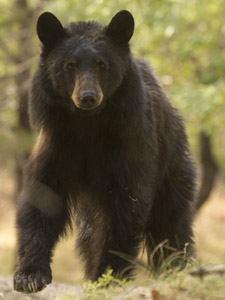
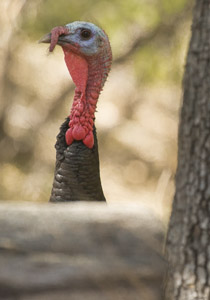
There are always surprises and bonuses on this shoot, from turkeys sticking their necks out
(is that a chopping block?) to curious bears on the trail behind our lodge!
This photo tour is one of our oldest, as we've been doing this trip almost every year for over twenty years! The area, Madera Canyon in the Santa Rita Mountains, about 40 miles south of Tucson, is one of my favorite locations in the United States. The biodiversity is incredible, with wildlife ranging from mountain-dwelling black bears to desert geckos, and, of course, a variety of birds.
Since we've been doing this trip for so long, and because we are kept so incredibly busy during the photo shoot, Mary and I have very little time to actually photograph, except for the bats we do on several nights where it is quite easy to be a part of the photo shoot, and a necessary part as well as I'll describe later. However, because we don't shoot very much, last year I used the images of talented photographer Christian Beaman, from the Netherlands, to illustrate our 2012 Trip Report. I've included his portfolio at the end of this report once again to present a wonderful representation of the images available. Thank you, once again, Christian!
I've also included our bat and our nocturnal mammal shots, that I set up 'in my spare time' that allowed me to do some additional photography while we were down in the desert, at night, photographing bats. For this I used a Range IR camera tripping device, and with it we captured Ringtails, Coatis, Gray Fox, Striped Skunk, and Raccoons.
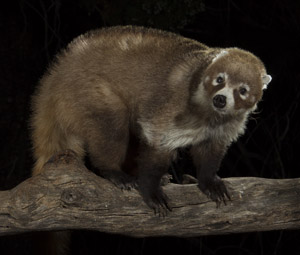
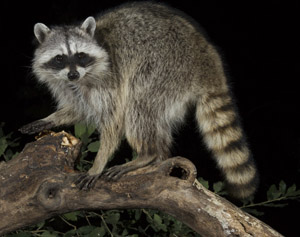
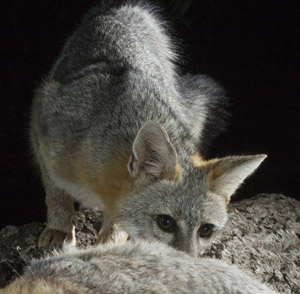
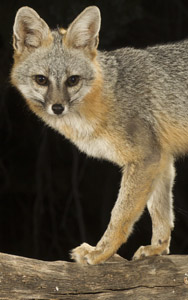
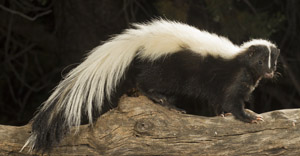
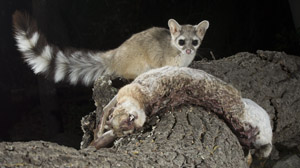
Using a Range IR with my unmanned camera, I photographed Coatimundi, Raccoon, Gray Fox, Striped Skunk, and Ringtail Cat while I was in the desert with the group photographing the bats. In the afternoon, while our participants would be shooting hummingbirds, I'd be working on setting up for the mammals at night. Unfortunately, on many nights nothing came in, and action was too unpredictable to attempt having everyone trying the setup, as it took hours. However, in 2014 I'll be offering this as an option, although that would require missing one or more afternoon hummingbird shooting sessions.
In our three plus weeks Mary took time, on our last full day in Arizona before we started packing, to shoot at one of our hummingbird sets. In all that time, I never had a chance!
 The hummingbird photography proved to be quite productive, although this year we had one of our 'plague years' where we had strong winds on a few days and an invasion of honey bees that we fought to control through the second and most of the third photo tours. Towards the end of the third tour we had the bees diverted, for the most part, from our feeders by offering alternative drinking and sugar water sites, but it was a struggle. No one was stung, but I can tell you that it is a bit nerve-wracking to be adding water or moving traps around a swarm of hundreds of bees buzzing about our heads.
The hummingbird photography proved to be quite productive, although this year we had one of our 'plague years' where we had strong winds on a few days and an invasion of honey bees that we fought to control through the second and most of the third photo tours. Towards the end of the third tour we had the bees diverted, for the most part, from our feeders by offering alternative drinking and sugar water sites, but it was a struggle. No one was stung, but I can tell you that it is a bit nerve-wracking to be adding water or moving traps around a swarm of hundreds of bees buzzing about our heads.
Here's the summary of our three shoots:
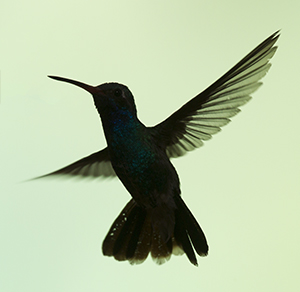 By the time we arrived at our base in the mountains of southern Arizona the desert below was in full bloom. We’re not sure if that is why hummingbirds appeared to be absent at our lodge, and as we unpacked for our three weeks in Madera Canyon we worried that the birds were gone. We’ve found, however, that hummingbirds seem to have wonderful memories and will recognize and return to particular feeders, or feeder sites, each year. At our home in Pennsylvania, at Hoot Hollow, we’ve watched with amazement when a Ruby-throated Hummingbird just returned from its southern migration would hover in space on our front porch, precisely where a feeder should be located! Considering, that this hummingbird left our property in late September, and did not return to our porch until late April, approximately seven months later, this memory is truly remarkable.
By the time we arrived at our base in the mountains of southern Arizona the desert below was in full bloom. We’re not sure if that is why hummingbirds appeared to be absent at our lodge, and as we unpacked for our three weeks in Madera Canyon we worried that the birds were gone. We’ve found, however, that hummingbirds seem to have wonderful memories and will recognize and return to particular feeders, or feeder sites, each year. At our home in Pennsylvania, at Hoot Hollow, we’ve watched with amazement when a Ruby-throated Hummingbird just returned from its southern migration would hover in space on our front porch, precisely where a feeder should be located! Considering, that this hummingbird left our property in late September, and did not return to our porch until late April, approximately seven months later, this memory is truly remarkable.
So we were not too worried that the hummingbirds had disappeared and, sure enough, within a few hours we had our first birds visiting our feeders. Our first group wouldn’t arrive for another five days, so we knew that our birds would have plenty of time to find our feeders. They did.
Normally, we set up five different hummingbird set-ups, scattered around the grounds of our lodge. This year, however, we rented a new cabin with a wonderful porch where we set up another feeder, giving us six different set-ups for our six participants. As it turned out, the sixth feeder proved to be the most active of them all!
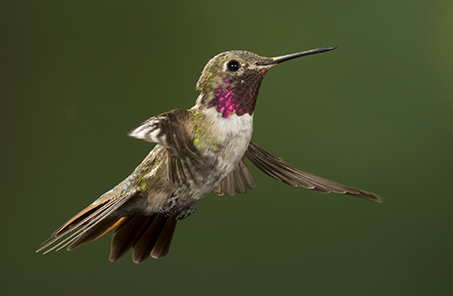
We rotate everyone through the six sets, with each shooter having an hour and a half before rotating on to the next feeder. As we say in our orientation, as the birds are free-flying with the ability to choose, or avoid, any feeder, it is possible that a feeder might be slow, or virtually bird-less, on any given day or hour. One of our sets suffered this malady on the second tour, while on the first it was a quite productive feeding area. By our third shoot, this set was back to almost normal activity.
Three to seven different species of hummingbirds normally visit our sites, and this year five different species visited the feeders at one time or another, although only three species, the Black-chinned, Broad-billed, and Magnificent, were regulars. Broad-tails, very common on the first tour, disappeared almost completely on the second, visiting the feeders only rarely during the entire week.
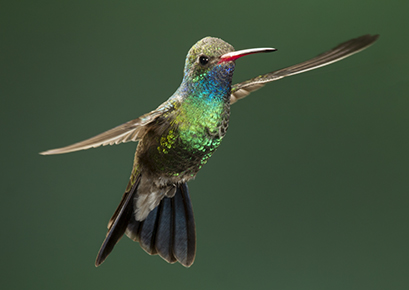 Luck always varies with participants, whether that’s because of pure luck or just attitude. One shooter this year was particularly impatient, and expressed boredom on the very first shooting session. Hummers visit our feeders on an average about once every 15 minutes, meaning that one feeder may only get a ‘hit’ or two per hour, while another might get a hit every five minutes, or less. The average, on that first shoot for that shooter, was about a bird every 20 minutes, which is almost average here. Although we warn everyone that they must be observant, that bees, ants, or orioles might perch at our feeding tube and drain a feeder while no one is in attendance, or watching, as luck would have it our impatient photographer had this happen, and watched for the entire session as birds flew in, investigated, and then quickly flew off, not offering any chance for shots. Ironically, this happened only once this year, and hasn’t happened in the last three, but it had to happen to our one unhappy camper.
Luck always varies with participants, whether that’s because of pure luck or just attitude. One shooter this year was particularly impatient, and expressed boredom on the very first shooting session. Hummers visit our feeders on an average about once every 15 minutes, meaning that one feeder may only get a ‘hit’ or two per hour, while another might get a hit every five minutes, or less. The average, on that first shoot for that shooter, was about a bird every 20 minutes, which is almost average here. Although we warn everyone that they must be observant, that bees, ants, or orioles might perch at our feeding tube and drain a feeder while no one is in attendance, or watching, as luck would have it our impatient photographer had this happen, and watched for the entire session as birds flew in, investigated, and then quickly flew off, not offering any chance for shots. Ironically, this happened only once this year, and hasn’t happened in the last three, but it had to happen to our one unhappy camper.
This year, we had two different natural light set-ups, with logs positioned for Acorn Woodpeckers, Black-headed Grosbeaks, Mexican Jays, Bridled Titmice, and White-breasted Nuthatches visited the sites. The visits were sporadic, and the patient participants got some nice shots of most of these species, although I did find that the sites were underutilized this year.
One of the unexpected highlights was the sessions we had with several Western Diamondback Rattlesnakes. Like I do for our Reptiles of the World Photo Shoot in Pennsylvania each summer at Hoot Hollow, I made a table-top set so that our shooters could photograph the rattlesnakes from an eye-level, or snake-level, perspective. Although potentially dangerous and formidable, the snakes behaved wonderfully, and one coiled and raised high in the classic defensive/aggressive pose of a diamondback.
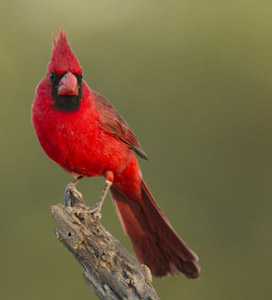 Each group visited a desert waterhole where, from the comforts of a blind, photographers shot Roadrunners, several different Doves, Gambel’s Quail, Curve-billed Thrashers, Cardinals, Phyraloxias, Bronze Cowbirds, and several other species for the morning. Photographers went down to the waterhole in pairs, two photographers per morning, and the shoot added many images to their portfolios.
Each group visited a desert waterhole where, from the comforts of a blind, photographers shot Roadrunners, several different Doves, Gambel’s Quail, Curve-billed Thrashers, Cardinals, Phyraloxias, Bronze Cowbirds, and several other species for the morning. Photographers went down to the waterhole in pairs, two photographers per morning, and the shoot added many images to their portfolios.
One of the most exciting, potential subjects of this Tour is the Bat Shoot we did on three nights each session. I say ‘potential’ because, unlike the hummingbirds who are visiting our feeders, the bats are flying to a pond for a drink. Here, the bats have the option of flying in from several different directions, and of dipping in for a drink before they reach our camera-trap sensors that catches the images.
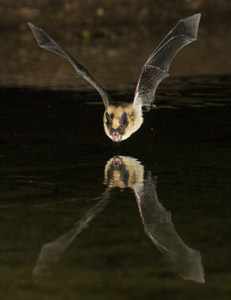 On our first Tour, conditions were extremely unfavorable for the bat photography. The weather had turned unseasonably cold, which always suppress bat flight activity. Because of the position of our cameras and flashes, the bats are best filmed when they’re flying from west to east, which they normally do on a windless night. If the wind blows from the west, however, the bats fly into the wind, giving us a tail-end view. Unfortunately, on Trip One, because of the cold and the wind, conditions were terrible, and our bat photography suffered. Everyone did get a few images, but it was a slow, rather boring several hours each night.
On our first Tour, conditions were extremely unfavorable for the bat photography. The weather had turned unseasonably cold, which always suppress bat flight activity. Because of the position of our cameras and flashes, the bats are best filmed when they’re flying from west to east, which they normally do on a windless night. If the wind blows from the west, however, the bats fly into the wind, giving us a tail-end view. Unfortunately, on Trip One, because of the cold and the wind, conditions were terrible, and our bat photography suffered. Everyone did get a few images, but it was a slow, rather boring several hours each night.
On the second Tour conditions were almost perfect, with temperatures 6 to 10 degrees higher than normal, and virtually windless conditions. Each night we had multiple passes, although, once again, there is a hitch. Bats trigger our camera traps when they break an infrared beam, and a bat might break that beam with its tail (when swooping upwards), a leading wing, or, ideally, with its face. Further, the bats are small, with most species less than eight inches wide when the wings are fully stretched.
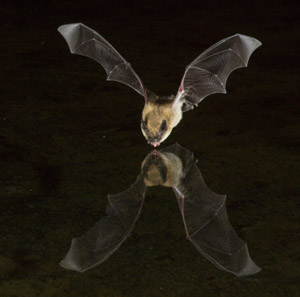
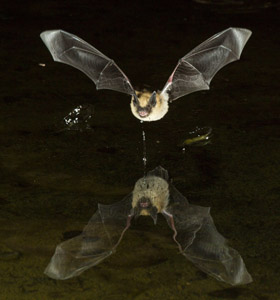
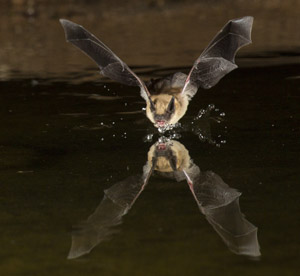
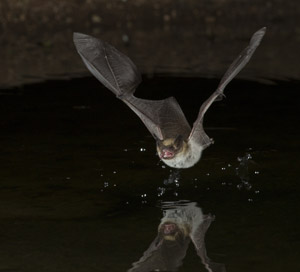
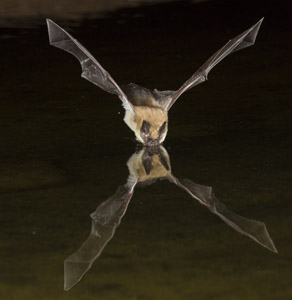
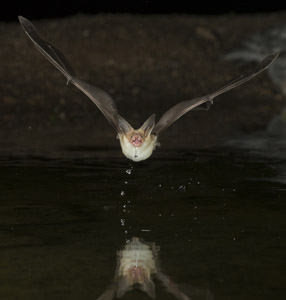
If a photographer attempts a tight, frame-filling shot, he risks cutting off some part of the bat if it isn’t flying straight into the frame. Conversely, if a photographer frames loosely, the likelihood of getting the whole bat in the frame is good, although the image-size will be small. Cropping, especially if the sensor is large, still yields a great shot. On the second tour, with three chances, most everyone did fairly well.
By the third tour the weather had stabilized with temperatures at or above normal, and windless at night, making almost perfect bat photography conditions. We did quite well, with two or three species flying in multiple times and everyone, by the second or third evening, had great shots.
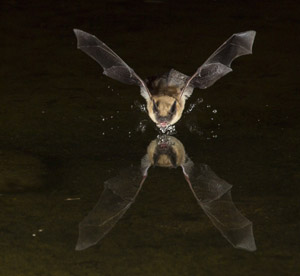 I don't know what other groups or shooters might be doing, because I often get phone calls or emails from other shooters here, complaining or wondering why they are not getting sharp images. Once we establish sharp focus on our target area most everyone gets sharp shots, although often, on the first night, there is operator error and at least one person's shots are disasterous. There is always a reason -- moving the focus collar accidentally, or
depressing the shutter button or remote switch and activating AF, instead of using the back, thumb-button, to activate AF, or similar errors. Bill Forbes, the owner/operator of The Pond, always positions the focus point correctly, and we use that point, so the error isn't Bill's, and I have no idea why others occasionally goof up. Regardless, with the flash system that we use our shooters get sharp, crisp images, at a flash duration of around 1/12,000th sec at f16, ISO 800. As the bat images in this report show, we do get results!
I don't know what other groups or shooters might be doing, because I often get phone calls or emails from other shooters here, complaining or wondering why they are not getting sharp images. Once we establish sharp focus on our target area most everyone gets sharp shots, although often, on the first night, there is operator error and at least one person's shots are disasterous. There is always a reason -- moving the focus collar accidentally, or
depressing the shutter button or remote switch and activating AF, instead of using the back, thumb-button, to activate AF, or similar errors. Bill Forbes, the owner/operator of The Pond, always positions the focus point correctly, and we use that point, so the error isn't Bill's, and I have no idea why others occasionally goof up. Regardless, with the flash system that we use our shooters get sharp, crisp images, at a flash duration of around 1/12,000th sec at f16, ISO 800. As the bat images in this report show, we do get results!
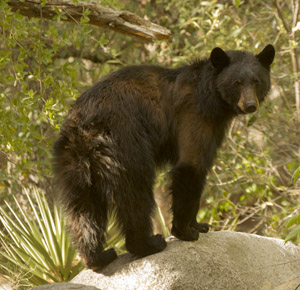
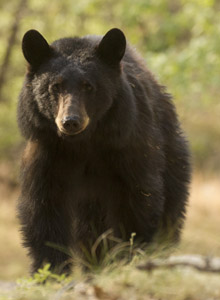
Perhaps the highlight, for me, for the third tour was a Black Bear that passed by our sixth hummingbird set. The bear had moved down to the stream and stayed there, so I climbed down from our cabin and tried stalking the bear. It saw me and ran off, but instead of disappearing into the woods the bear stopped at the hiking trail and proceeded uphill, via the trail.
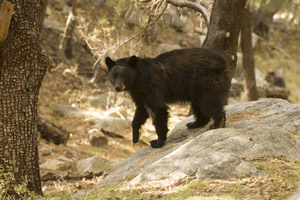 I ran on ahead on a parallel track and then intersected the trail where I laid down behind a fallen tree and waited. A few minutes later the bear, about a 200 pounder, sauntered up the trail and I started shooting. The bear paused, hearing the camera's shutter, and then ran off into the woods but once again the bear didn't go far. Instead, it was now curious and circled me, getting quite close before losing its nerve and running across the trail, back towards the stream. I ran ahead again, and intercepted the bear again, where I was rewarded with some very nice shots as the bear perched on a boulder and looked back, studying me.
I ran on ahead on a parallel track and then intersected the trail where I laid down behind a fallen tree and waited. A few minutes later the bear, about a 200 pounder, sauntered up the trail and I started shooting. The bear paused, hearing the camera's shutter, and then ran off into the woods but once again the bear didn't go far. Instead, it was now curious and circled me, getting quite close before losing its nerve and running across the trail, back towards the stream. I ran ahead again, and intercepted the bear again, where I was rewarded with some very nice shots as the bear perched on a boulder and looked back, studying me.
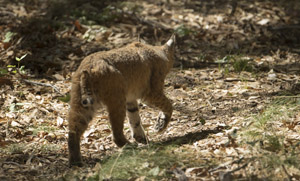 I'd hoped to have similar luck with the bobcat that followed the same path as the bear the very next day. Mexican jays, Cooper's Hawks, and acorn woodpeckers loudly announced the cat's presence and I stalked towards it. Most of the birds flew off but the Cooper's hawk continued to circle, so I guessed the cat had hunkered down less than fifty yards from where I stood. Eventually the bobcat rose, but I didn't spot it until it was some distance away, passing by our Set Five where Mary and some others watched and photographed. I circled and ran up stream but the cat didn't follow. Instead, the bobcat settled into some cover where it remained, unseen, throughout the afternoon until the daughter of the owner flushed the cat when she went for a walk.
I'd hoped to have similar luck with the bobcat that followed the same path as the bear the very next day. Mexican jays, Cooper's Hawks, and acorn woodpeckers loudly announced the cat's presence and I stalked towards it. Most of the birds flew off but the Cooper's hawk continued to circle, so I guessed the cat had hunkered down less than fifty yards from where I stood. Eventually the bobcat rose, but I didn't spot it until it was some distance away, passing by our Set Five where Mary and some others watched and photographed. I circled and ran up stream but the cat didn't follow. Instead, the bobcat settled into some cover where it remained, unseen, throughout the afternoon until the daughter of the owner flushed the cat when she went for a walk.
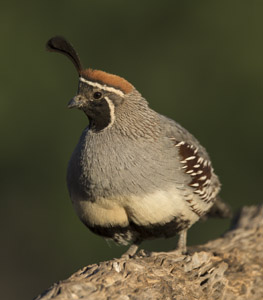
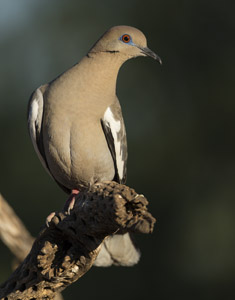
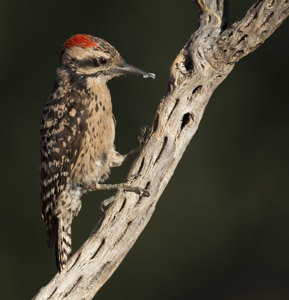
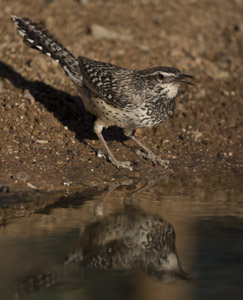
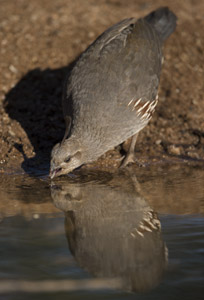
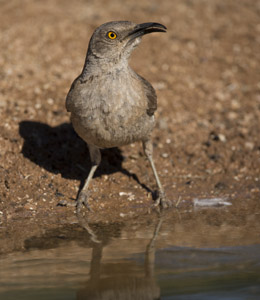
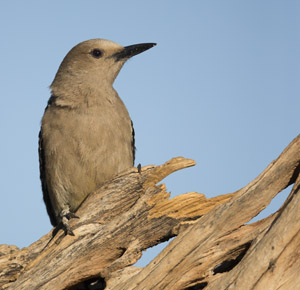
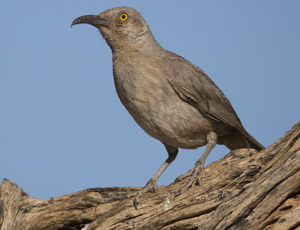
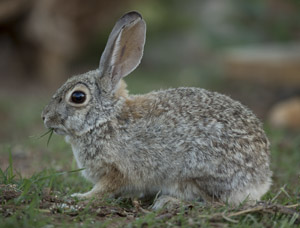
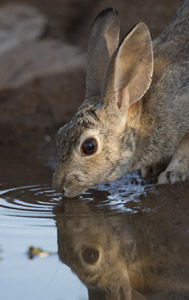
On my very last full day I had a chance to visit the Pond where I spent 3 hours, including the subjects above, Gambel's Quail, White-winged Dove, Ladder-backed Woodpecker, Cactus Wren, Gambel's Quail, Curve-billed Thrasher, Golden-fronted Woodpecker, Curve-billed Thrasher, Desert Cottontail Rabbits.
Our last day was quite hectic, as I finally made it to the Pond for a short morning shoot and Mary worked at Set Six for a few hours. Afterwards, we began to pack, and we continued to pack equipment and kitchen supplies, etc. until long after dark. This process is arduous, and exacting, as there is a lot of gear. This includes six complete flash sets for our six hummingbird sets, a complete set of flashes for each set as backup, plus an equal number of flashes in reserve. We have over 35 Manfrotto Magic Arms or Articulating Arms, 12 light stands, 2 autopoles, six tripods, 2 Olson flash sets, another high speed flash system, and other accessories for the flash setups for bats and hummers. Mary's kitchen stuff takes up a lot of room as well, as well as our camera gear. When finished, our 8 foot pickup bed, with a camper shell on top, is filled completely, without room for another breadbox!
We arrived home safe, after three long 12 hour day drives, but fortunately the weather cooperated and the horrific tornado activity occured either before or after our journey.
We left Arizona with the usual regrets, simply hating to leave, but we will be returning again next year for three shoots in 2014. We hope you can join us!
The following images are from one of our participants, Christian Biemans, from Holland, who made this portfolio in 2012.
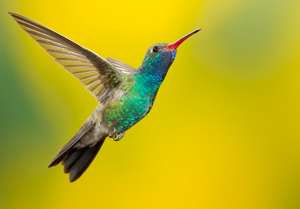
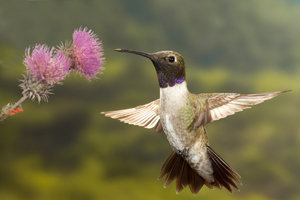
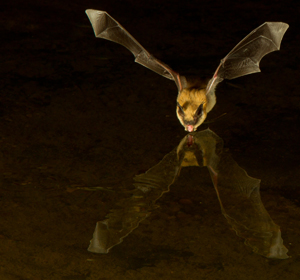
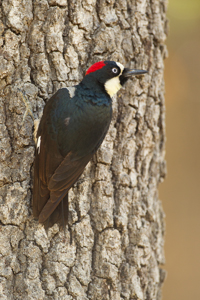
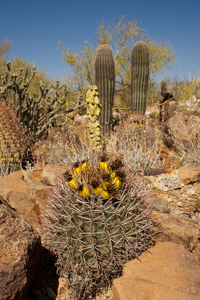
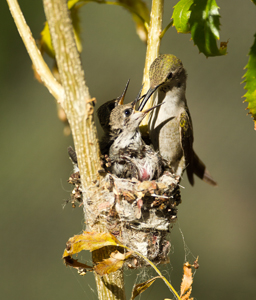
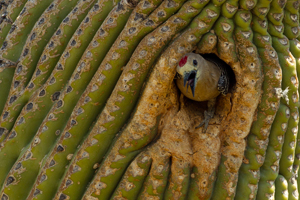
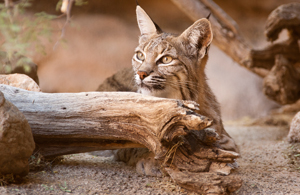
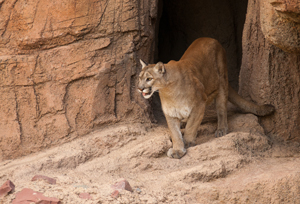
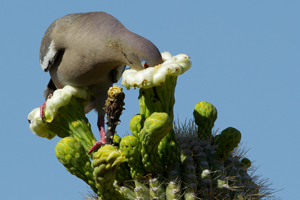
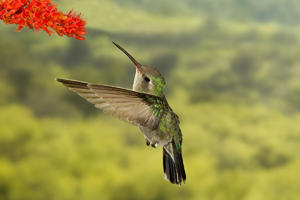
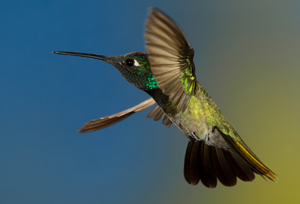
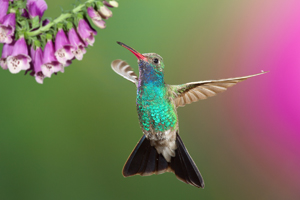
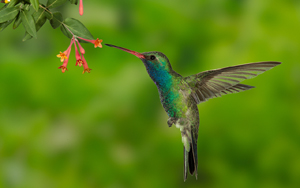
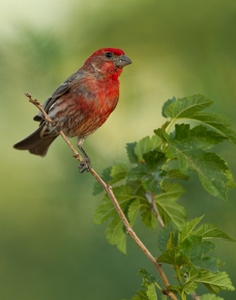
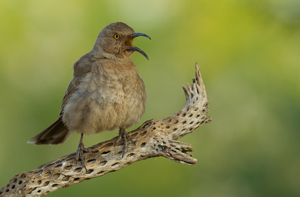
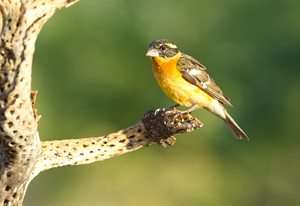
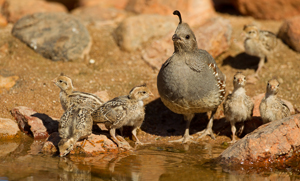
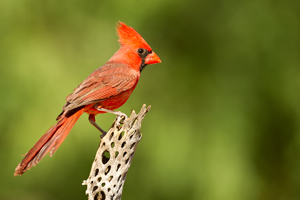
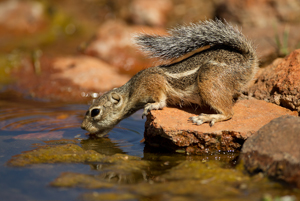
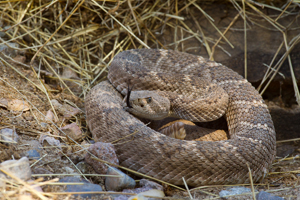
I hope you enjoyed Christian's wonderful portfolio. I've never featured anyone's entire portfolio before in one of our trip reports but this one may mark a new trend.
There were several reasons for this. One, Mary and I were so busy that we did not have the opportunity, even once, to photograph any hummingbirds ourselves. I only shot 'test shots' to make sure the lighting was correct for the sets, and since we've been to the Museum many times each of us concentrated on specific species. I really regret I didn't follow Christian around, shooting some of the birds he got! More importantly, Christian's work was superb, but it ALSO ILLUSTRATED THAT THIS IS THE TYPE OF SHOOTING you too can enjoy on this special shoot. No one else offers this type of combination, of birds, bats, reptiles, and a paid-for trip to the Museum. The shooting opportunities are diverse, and Christian's portfolio truly shows this. THANK YOU, CHRISTIAN!
Check out our 2009 and 2010 Bat Portfolio
Read our 2009 Trip Report and 2010 Trip Report or our 2011 Trip Report for further information!
About Your Leaders
Contact our Office to REGISTER for our 2013 Hummingbird and Hummingbird and Bat Photo Shoots
Contact us by e-mail at
info@hoothollow.com
Office Phone: 717 543-6423
Or FAX us at: (717) 543-5342.
Return to HomePage or to photo tours general information.
Hummingbirds and Bats
of Southern Arizona
TRIP REPORT, 2013


There are always surprises and bonuses on this shoot, from turkeys sticking their necks out
(is that a chopping block?) to curious bears on the trail behind our lodge!
This photo tour is one of our oldest, as we've been doing this trip almost every year for over twenty years! The area, Madera Canyon in the Santa Rita Mountains, about 40 miles south of Tucson, is one of my favorite locations in the United States. The biodiversity is incredible, with wildlife ranging from mountain-dwelling black bears to desert geckos, and, of course, a variety of birds.
Since we've been doing this trip for so long, and because we are kept so incredibly busy during the photo shoot, Mary and I have very little time to actually photograph, except for the bats we do on several nights where it is quite easy to be a part of the photo shoot, and a necessary part as well as I'll describe later. However, because we don't shoot very much, last year I used the images of talented photographer Christian Beaman, from the Netherlands, to illustrate our 2012 Trip Report. I've included his portfolio at the end of this report once again to present a wonderful representation of the images available. Thank you, once again, Christian!
I've also included our bat and our nocturnal mammal shots, that I set up 'in my spare time' that allowed me to do some additional photography while we were down in the desert, at night, photographing bats. For this I used a Range IR camera tripping device, and with it we captured Ringtails, Coatis, Gray Fox, Striped Skunk, and Raccoons.






Using a Range IR with my unmanned camera, I photographed Coatimundi, Raccoon, Gray Fox, Striped Skunk, and Ringtail Cat while I was in the desert with the group photographing the bats. In the afternoon, while our participants would be shooting hummingbirds, I'd be working on setting up for the mammals at night. Unfortunately, on many nights nothing came in, and action was too unpredictable to attempt having everyone trying the setup, as it took hours. However, in 2014 I'll be offering this as an option, although that would require missing one or more afternoon hummingbird shooting sessions.
In our three plus weeks Mary took time, on our last full day in Arizona before we started packing, to shoot at one of our hummingbird sets. In all that time, I never had a chance!
 The hummingbird photography proved to be quite productive, although this year we had one of our 'plague years' where we had strong winds on a few days and an invasion of honey bees that we fought to control through the second and most of the third photo tours. Towards the end of the third tour we had the bees diverted, for the most part, from our feeders by offering alternative drinking and sugar water sites, but it was a struggle. No one was stung, but I can tell you that it is a bit nerve-wracking to be adding water or moving traps around a swarm of hundreds of bees buzzing about our heads.
The hummingbird photography proved to be quite productive, although this year we had one of our 'plague years' where we had strong winds on a few days and an invasion of honey bees that we fought to control through the second and most of the third photo tours. Towards the end of the third tour we had the bees diverted, for the most part, from our feeders by offering alternative drinking and sugar water sites, but it was a struggle. No one was stung, but I can tell you that it is a bit nerve-wracking to be adding water or moving traps around a swarm of hundreds of bees buzzing about our heads.
Here's the summary of our three shoots:
 By the time we arrived at our base in the mountains of southern Arizona the desert below was in full bloom. We’re not sure if that is why hummingbirds appeared to be absent at our lodge, and as we unpacked for our three weeks in Madera Canyon we worried that the birds were gone. We’ve found, however, that hummingbirds seem to have wonderful memories and will recognize and return to particular feeders, or feeder sites, each year. At our home in Pennsylvania, at Hoot Hollow, we’ve watched with amazement when a Ruby-throated Hummingbird just returned from its southern migration would hover in space on our front porch, precisely where a feeder should be located! Considering, that this hummingbird left our property in late September, and did not return to our porch until late April, approximately seven months later, this memory is truly remarkable.
By the time we arrived at our base in the mountains of southern Arizona the desert below was in full bloom. We’re not sure if that is why hummingbirds appeared to be absent at our lodge, and as we unpacked for our three weeks in Madera Canyon we worried that the birds were gone. We’ve found, however, that hummingbirds seem to have wonderful memories and will recognize and return to particular feeders, or feeder sites, each year. At our home in Pennsylvania, at Hoot Hollow, we’ve watched with amazement when a Ruby-throated Hummingbird just returned from its southern migration would hover in space on our front porch, precisely where a feeder should be located! Considering, that this hummingbird left our property in late September, and did not return to our porch until late April, approximately seven months later, this memory is truly remarkable.
So we were not too worried that the hummingbirds had disappeared and, sure enough, within a few hours we had our first birds visiting our feeders. Our first group wouldn’t arrive for another five days, so we knew that our birds would have plenty of time to find our feeders. They did.
Normally, we set up five different hummingbird set-ups, scattered around the grounds of our lodge. This year, however, we rented a new cabin with a wonderful porch where we set up another feeder, giving us six different set-ups for our six participants. As it turned out, the sixth feeder proved to be the most active of them all!

We rotate everyone through the six sets, with each shooter having an hour and a half before rotating on to the next feeder. As we say in our orientation, as the birds are free-flying with the ability to choose, or avoid, any feeder, it is possible that a feeder might be slow, or virtually bird-less, on any given day or hour. One of our sets suffered this malady on the second tour, while on the first it was a quite productive feeding area. By our third shoot, this set was back to almost normal activity.
Three to seven different species of hummingbirds normally visit our sites, and this year five different species visited the feeders at one time or another, although only three species, the Black-chinned, Broad-billed, and Magnificent, were regulars. Broad-tails, very common on the first tour, disappeared almost completely on the second, visiting the feeders only rarely during the entire week.
 Luck always varies with participants, whether that’s because of pure luck or just attitude. One shooter this year was particularly impatient, and expressed boredom on the very first shooting session. Hummers visit our feeders on an average about once every 15 minutes, meaning that one feeder may only get a ‘hit’ or two per hour, while another might get a hit every five minutes, or less. The average, on that first shoot for that shooter, was about a bird every 20 minutes, which is almost average here. Although we warn everyone that they must be observant, that bees, ants, or orioles might perch at our feeding tube and drain a feeder while no one is in attendance, or watching, as luck would have it our impatient photographer had this happen, and watched for the entire session as birds flew in, investigated, and then quickly flew off, not offering any chance for shots. Ironically, this happened only once this year, and hasn’t happened in the last three, but it had to happen to our one unhappy camper.
Luck always varies with participants, whether that’s because of pure luck or just attitude. One shooter this year was particularly impatient, and expressed boredom on the very first shooting session. Hummers visit our feeders on an average about once every 15 minutes, meaning that one feeder may only get a ‘hit’ or two per hour, while another might get a hit every five minutes, or less. The average, on that first shoot for that shooter, was about a bird every 20 minutes, which is almost average here. Although we warn everyone that they must be observant, that bees, ants, or orioles might perch at our feeding tube and drain a feeder while no one is in attendance, or watching, as luck would have it our impatient photographer had this happen, and watched for the entire session as birds flew in, investigated, and then quickly flew off, not offering any chance for shots. Ironically, this happened only once this year, and hasn’t happened in the last three, but it had to happen to our one unhappy camper.
This year, we had two different natural light set-ups, with logs positioned for Acorn Woodpeckers, Black-headed Grosbeaks, Mexican Jays, Bridled Titmice, and White-breasted Nuthatches visited the sites. The visits were sporadic, and the patient participants got some nice shots of most of these species, although I did find that the sites were underutilized this year.
One of the unexpected highlights was the sessions we had with several Western Diamondback Rattlesnakes. Like I do for our Reptiles of the World Photo Shoot in Pennsylvania each summer at Hoot Hollow, I made a table-top set so that our shooters could photograph the rattlesnakes from an eye-level, or snake-level, perspective. Although potentially dangerous and formidable, the snakes behaved wonderfully, and one coiled and raised high in the classic defensive/aggressive pose of a diamondback.
 Each group visited a desert waterhole where, from the comforts of a blind, photographers shot Roadrunners, several different Doves, Gambel’s Quail, Curve-billed Thrashers, Cardinals, Phyraloxias, Bronze Cowbirds, and several other species for the morning. Photographers went down to the waterhole in pairs, two photographers per morning, and the shoot added many images to their portfolios.
Each group visited a desert waterhole where, from the comforts of a blind, photographers shot Roadrunners, several different Doves, Gambel’s Quail, Curve-billed Thrashers, Cardinals, Phyraloxias, Bronze Cowbirds, and several other species for the morning. Photographers went down to the waterhole in pairs, two photographers per morning, and the shoot added many images to their portfolios.
One of the most exciting, potential subjects of this Tour is the Bat Shoot we did on three nights each session. I say ‘potential’ because, unlike the hummingbirds who are visiting our feeders, the bats are flying to a pond for a drink. Here, the bats have the option of flying in from several different directions, and of dipping in for a drink before they reach our camera-trap sensors that catches the images.
 On our first Tour, conditions were extremely unfavorable for the bat photography. The weather had turned unseasonably cold, which always suppress bat flight activity. Because of the position of our cameras and flashes, the bats are best filmed when they’re flying from west to east, which they normally do on a windless night. If the wind blows from the west, however, the bats fly into the wind, giving us a tail-end view. Unfortunately, on Trip One, because of the cold and the wind, conditions were terrible, and our bat photography suffered. Everyone did get a few images, but it was a slow, rather boring several hours each night.
On our first Tour, conditions were extremely unfavorable for the bat photography. The weather had turned unseasonably cold, which always suppress bat flight activity. Because of the position of our cameras and flashes, the bats are best filmed when they’re flying from west to east, which they normally do on a windless night. If the wind blows from the west, however, the bats fly into the wind, giving us a tail-end view. Unfortunately, on Trip One, because of the cold and the wind, conditions were terrible, and our bat photography suffered. Everyone did get a few images, but it was a slow, rather boring several hours each night.
On the second Tour conditions were almost perfect, with temperatures 6 to 10 degrees higher than normal, and virtually windless conditions. Each night we had multiple passes, although, once again, there is a hitch. Bats trigger our camera traps when they break an infrared beam, and a bat might break that beam with its tail (when swooping upwards), a leading wing, or, ideally, with its face. Further, the bats are small, with most species less than eight inches wide when the wings are fully stretched.






If a photographer attempts a tight, frame-filling shot, he risks cutting off some part of the bat if it isn’t flying straight into the frame. Conversely, if a photographer frames loosely, the likelihood of getting the whole bat in the frame is good, although the image-size will be small. Cropping, especially if the sensor is large, still yields a great shot. On the second tour, with three chances, most everyone did fairly well.
By the third tour the weather had stabilized with temperatures at or above normal, and windless at night, making almost perfect bat photography conditions. We did quite well, with two or three species flying in multiple times and everyone, by the second or third evening, had great shots.
 I don't know what other groups or shooters might be doing, because I often get phone calls or emails from other shooters here, complaining or wondering why they are not getting sharp images. Once we establish sharp focus on our target area most everyone gets sharp shots, although often, on the first night, there is operator error and at least one person's shots are disasterous. There is always a reason -- moving the focus collar accidentally, or
depressing the shutter button or remote switch and activating AF, instead of using the back, thumb-button, to activate AF, or similar errors. Bill Forbes, the owner/operator of The Pond, always positions the focus point correctly, and we use that point, so the error isn't Bill's, and I have no idea why others occasionally goof up. Regardless, with the flash system that we use our shooters get sharp, crisp images, at a flash duration of around 1/12,000th sec at f16, ISO 800. As the bat images in this report show, we do get results!
I don't know what other groups or shooters might be doing, because I often get phone calls or emails from other shooters here, complaining or wondering why they are not getting sharp images. Once we establish sharp focus on our target area most everyone gets sharp shots, although often, on the first night, there is operator error and at least one person's shots are disasterous. There is always a reason -- moving the focus collar accidentally, or
depressing the shutter button or remote switch and activating AF, instead of using the back, thumb-button, to activate AF, or similar errors. Bill Forbes, the owner/operator of The Pond, always positions the focus point correctly, and we use that point, so the error isn't Bill's, and I have no idea why others occasionally goof up. Regardless, with the flash system that we use our shooters get sharp, crisp images, at a flash duration of around 1/12,000th sec at f16, ISO 800. As the bat images in this report show, we do get results!


Perhaps the highlight, for me, for the third tour was a Black Bear that passed by our sixth hummingbird set. The bear had moved down to the stream and stayed there, so I climbed down from our cabin and tried stalking the bear. It saw me and ran off, but instead of disappearing into the woods the bear stopped at the hiking trail and proceeded uphill, via the trail.
 I ran on ahead on a parallel track and then intersected the trail where I laid down behind a fallen tree and waited. A few minutes later the bear, about a 200 pounder, sauntered up the trail and I started shooting. The bear paused, hearing the camera's shutter, and then ran off into the woods but once again the bear didn't go far. Instead, it was now curious and circled me, getting quite close before losing its nerve and running across the trail, back towards the stream. I ran ahead again, and intercepted the bear again, where I was rewarded with some very nice shots as the bear perched on a boulder and looked back, studying me.
I ran on ahead on a parallel track and then intersected the trail where I laid down behind a fallen tree and waited. A few minutes later the bear, about a 200 pounder, sauntered up the trail and I started shooting. The bear paused, hearing the camera's shutter, and then ran off into the woods but once again the bear didn't go far. Instead, it was now curious and circled me, getting quite close before losing its nerve and running across the trail, back towards the stream. I ran ahead again, and intercepted the bear again, where I was rewarded with some very nice shots as the bear perched on a boulder and looked back, studying me.
 I'd hoped to have similar luck with the bobcat that followed the same path as the bear the very next day. Mexican jays, Cooper's Hawks, and acorn woodpeckers loudly announced the cat's presence and I stalked towards it. Most of the birds flew off but the Cooper's hawk continued to circle, so I guessed the cat had hunkered down less than fifty yards from where I stood. Eventually the bobcat rose, but I didn't spot it until it was some distance away, passing by our Set Five where Mary and some others watched and photographed. I circled and ran up stream but the cat didn't follow. Instead, the bobcat settled into some cover where it remained, unseen, throughout the afternoon until the daughter of the owner flushed the cat when she went for a walk.
I'd hoped to have similar luck with the bobcat that followed the same path as the bear the very next day. Mexican jays, Cooper's Hawks, and acorn woodpeckers loudly announced the cat's presence and I stalked towards it. Most of the birds flew off but the Cooper's hawk continued to circle, so I guessed the cat had hunkered down less than fifty yards from where I stood. Eventually the bobcat rose, but I didn't spot it until it was some distance away, passing by our Set Five where Mary and some others watched and photographed. I circled and ran up stream but the cat didn't follow. Instead, the bobcat settled into some cover where it remained, unseen, throughout the afternoon until the daughter of the owner flushed the cat when she went for a walk.










On my very last full day I had a chance to visit the Pond where I spent 3 hours, including the subjects above, Gambel's Quail, White-winged Dove, Ladder-backed Woodpecker, Cactus Wren, Gambel's Quail, Curve-billed Thrasher, Golden-fronted Woodpecker, Curve-billed Thrasher, Desert Cottontail Rabbits.
Our last day was quite hectic, as I finally made it to the Pond for a short morning shoot and Mary worked at Set Six for a few hours. Afterwards, we began to pack, and we continued to pack equipment and kitchen supplies, etc. until long after dark. This process is arduous, and exacting, as there is a lot of gear. This includes six complete flash sets for our six hummingbird sets, a complete set of flashes for each set as backup, plus an equal number of flashes in reserve. We have over 35 Manfrotto Magic Arms or Articulating Arms, 12 light stands, 2 autopoles, six tripods, 2 Olson flash sets, another high speed flash system, and other accessories for the flash setups for bats and hummers. Mary's kitchen stuff takes up a lot of room as well, as well as our camera gear. When finished, our 8 foot pickup bed, with a camper shell on top, is filled completely, without room for another breadbox!
We arrived home safe, after three long 12 hour day drives, but fortunately the weather cooperated and the horrific tornado activity occured either before or after our journey.
We left Arizona with the usual regrets, simply hating to leave, but we will be returning again next year for three shoots in 2014. We hope you can join us!
The following images are from one of our participants, Christian Biemans, from Holland, who made this portfolio in 2012.





















I hope you enjoyed Christian's wonderful portfolio. I've never featured anyone's entire portfolio before in one of our trip reports but this one may mark a new trend.
There were several reasons for this. One, Mary and I were so busy that we did not have the opportunity, even once, to photograph any hummingbirds ourselves. I only shot 'test shots' to make sure the lighting was correct for the sets, and since we've been to the Museum many times each of us concentrated on specific species. I really regret I didn't follow Christian around, shooting some of the birds he got! More importantly, Christian's work was superb, but it ALSO ILLUSTRATED THAT THIS IS THE TYPE OF SHOOTING you too can enjoy on this special shoot. No one else offers this type of combination, of birds, bats, reptiles, and a paid-for trip to the Museum. The shooting opportunities are diverse, and Christian's portfolio truly shows this. THANK YOU, CHRISTIAN!
Check out our 2009 and 2010 Bat Portfolio
Read our 2009 Trip Report and 2010 Trip Report or our 2011 Trip Report for further information!
About Your Leaders
Contact our Office to REGISTER for our 2013 Hummingbird and Hummingbird and Bat Photo Shoots
Contact us by e-mail at
info@hoothollow.com
Office Phone: 717 543-6423
Or FAX us at: (717) 543-5342.
Return to HomePage or to photo tours general information.
Hummingbirds and Bats
of Southern Arizona
TRIP REPORT, 2013


There are always surprises and bonuses on this shoot, from turkeys sticking their necks out
(is that a chopping block?) to curious bears on the trail behind our lodge!
This photo tour is one of our oldest, as we've been doing this trip almost every year for over twenty years! The area, Madera Canyon in the Santa Rita Mountains, about 40 miles south of Tucson, is one of my favorite locations in the United States. The biodiversity is incredible, with wildlife ranging from mountain-dwelling black bears to desert geckos, and, of course, a variety of birds.
Since we've been doing this trip for so long, and because we are kept so incredibly busy during the photo shoot, Mary and I have very little time to actually photograph, except for the bats we do on several nights where it is quite easy to be a part of the photo shoot, and a necessary part as well as I'll describe later. However, because we don't shoot very much, last year I used the images of talented photographer Christian Beaman, from the Netherlands, to illustrate our 2012 Trip Report. I've included his portfolio at the end of this report once again to present a wonderful representation of the images available. Thank you, once again, Christian!
I've also included our bat and our nocturnal mammal shots, that I set up 'in my spare time' that allowed me to do some additional photography while we were down in the desert, at night, photographing bats. For this I used a Range IR camera tripping device, and with it we captured Ringtails, Coatis, Gray Fox, Striped Skunk, and Raccoons.






Using a Range IR with my unmanned camera, I photographed Coatimundi, Raccoon, Gray Fox, Striped Skunk, and Ringtail Cat while I was in the desert with the group photographing the bats. In the afternoon, while our participants would be shooting hummingbirds, I'd be working on setting up for the mammals at night. Unfortunately, on many nights nothing came in, and action was too unpredictable to attempt having everyone trying the setup, as it took hours. However, in 2014 I'll be offering this as an option, although that would require missing one or more afternoon hummingbird shooting sessions.
In our three plus weeks Mary took time, on our last full day in Arizona before we started packing, to shoot at one of our hummingbird sets. In all that time, I never had a chance!
 The hummingbird photography proved to be quite productive, although this year we had one of our 'plague years' where we had strong winds on a few days and an invasion of honey bees that we fought to control through the second and most of the third photo tours. Towards the end of the third tour we had the bees diverted, for the most part, from our feeders by offering alternative drinking and sugar water sites, but it was a struggle. No one was stung, but I can tell you that it is a bit nerve-wracking to be adding water or moving traps around a swarm of hundreds of bees buzzing about our heads.
The hummingbird photography proved to be quite productive, although this year we had one of our 'plague years' where we had strong winds on a few days and an invasion of honey bees that we fought to control through the second and most of the third photo tours. Towards the end of the third tour we had the bees diverted, for the most part, from our feeders by offering alternative drinking and sugar water sites, but it was a struggle. No one was stung, but I can tell you that it is a bit nerve-wracking to be adding water or moving traps around a swarm of hundreds of bees buzzing about our heads.
Here's the summary of our three shoots:
 By the time we arrived at our base in the mountains of southern Arizona the desert below was in full bloom. We’re not sure if that is why hummingbirds appeared to be absent at our lodge, and as we unpacked for our three weeks in Madera Canyon we worried that the birds were gone. We’ve found, however, that hummingbirds seem to have wonderful memories and will recognize and return to particular feeders, or feeder sites, each year. At our home in Pennsylvania, at Hoot Hollow, we’ve watched with amazement when a Ruby-throated Hummingbird just returned from its southern migration would hover in space on our front porch, precisely where a feeder should be located! Considering, that this hummingbird left our property in late September, and did not return to our porch until late April, approximately seven months later, this memory is truly remarkable.
By the time we arrived at our base in the mountains of southern Arizona the desert below was in full bloom. We’re not sure if that is why hummingbirds appeared to be absent at our lodge, and as we unpacked for our three weeks in Madera Canyon we worried that the birds were gone. We’ve found, however, that hummingbirds seem to have wonderful memories and will recognize and return to particular feeders, or feeder sites, each year. At our home in Pennsylvania, at Hoot Hollow, we’ve watched with amazement when a Ruby-throated Hummingbird just returned from its southern migration would hover in space on our front porch, precisely where a feeder should be located! Considering, that this hummingbird left our property in late September, and did not return to our porch until late April, approximately seven months later, this memory is truly remarkable.
So we were not too worried that the hummingbirds had disappeared and, sure enough, within a few hours we had our first birds visiting our feeders. Our first group wouldn’t arrive for another five days, so we knew that our birds would have plenty of time to find our feeders. They did.
Normally, we set up five different hummingbird set-ups, scattered around the grounds of our lodge. This year, however, we rented a new cabin with a wonderful porch where we set up another feeder, giving us six different set-ups for our six participants. As it turned out, the sixth feeder proved to be the most active of them all!

We rotate everyone through the six sets, with each shooter having an hour and a half before rotating on to the next feeder. As we say in our orientation, as the birds are free-flying with the ability to choose, or avoid, any feeder, it is possible that a feeder might be slow, or virtually bird-less, on any given day or hour. One of our sets suffered this malady on the second tour, while on the first it was a quite productive feeding area. By our third shoot, this set was back to almost normal activity.
Three to seven different species of hummingbirds normally visit our sites, and this year five different species visited the feeders at one time or another, although only three species, the Black-chinned, Broad-billed, and Magnificent, were regulars. Broad-tails, very common on the first tour, disappeared almost completely on the second, visiting the feeders only rarely during the entire week.
 Luck always varies with participants, whether that’s because of pure luck or just attitude. One shooter this year was particularly impatient, and expressed boredom on the very first shooting session. Hummers visit our feeders on an average about once every 15 minutes, meaning that one feeder may only get a ‘hit’ or two per hour, while another might get a hit every five minutes, or less. The average, on that first shoot for that shooter, was about a bird every 20 minutes, which is almost average here. Although we warn everyone that they must be observant, that bees, ants, or orioles might perch at our feeding tube and drain a feeder while no one is in attendance, or watching, as luck would have it our impatient photographer had this happen, and watched for the entire session as birds flew in, investigated, and then quickly flew off, not offering any chance for shots. Ironically, this happened only once this year, and hasn’t happened in the last three, but it had to happen to our one unhappy camper.
Luck always varies with participants, whether that’s because of pure luck or just attitude. One shooter this year was particularly impatient, and expressed boredom on the very first shooting session. Hummers visit our feeders on an average about once every 15 minutes, meaning that one feeder may only get a ‘hit’ or two per hour, while another might get a hit every five minutes, or less. The average, on that first shoot for that shooter, was about a bird every 20 minutes, which is almost average here. Although we warn everyone that they must be observant, that bees, ants, or orioles might perch at our feeding tube and drain a feeder while no one is in attendance, or watching, as luck would have it our impatient photographer had this happen, and watched for the entire session as birds flew in, investigated, and then quickly flew off, not offering any chance for shots. Ironically, this happened only once this year, and hasn’t happened in the last three, but it had to happen to our one unhappy camper.
This year, we had two different natural light set-ups, with logs positioned for Acorn Woodpeckers, Black-headed Grosbeaks, Mexican Jays, Bridled Titmice, and White-breasted Nuthatches visited the sites. The visits were sporadic, and the patient participants got some nice shots of most of these species, although I did find that the sites were underutilized this year.
One of the unexpected highlights was the sessions we had with several Western Diamondback Rattlesnakes. Like I do for our Reptiles of the World Photo Shoot in Pennsylvania each summer at Hoot Hollow, I made a table-top set so that our shooters could photograph the rattlesnakes from an eye-level, or snake-level, perspective. Although potentially dangerous and formidable, the snakes behaved wonderfully, and one coiled and raised high in the classic defensive/aggressive pose of a diamondback.
 Each group visited a desert waterhole where, from the comforts of a blind, photographers shot Roadrunners, several different Doves, Gambel’s Quail, Curve-billed Thrashers, Cardinals, Phyraloxias, Bronze Cowbirds, and several other species for the morning. Photographers went down to the waterhole in pairs, two photographers per morning, and the shoot added many images to their portfolios.
Each group visited a desert waterhole where, from the comforts of a blind, photographers shot Roadrunners, several different Doves, Gambel’s Quail, Curve-billed Thrashers, Cardinals, Phyraloxias, Bronze Cowbirds, and several other species for the morning. Photographers went down to the waterhole in pairs, two photographers per morning, and the shoot added many images to their portfolios.
One of the most exciting, potential subjects of this Tour is the Bat Shoot we did on three nights each session. I say ‘potential’ because, unlike the hummingbirds who are visiting our feeders, the bats are flying to a pond for a drink. Here, the bats have the option of flying in from several different directions, and of dipping in for a drink before they reach our camera-trap sensors that catches the images.
 On our first Tour, conditions were extremely unfavorable for the bat photography. The weather had turned unseasonably cold, which always suppress bat flight activity. Because of the position of our cameras and flashes, the bats are best filmed when they’re flying from west to east, which they normally do on a windless night. If the wind blows from the west, however, the bats fly into the wind, giving us a tail-end view. Unfortunately, on Trip One, because of the cold and the wind, conditions were terrible, and our bat photography suffered. Everyone did get a few images, but it was a slow, rather boring several hours each night.
On our first Tour, conditions were extremely unfavorable for the bat photography. The weather had turned unseasonably cold, which always suppress bat flight activity. Because of the position of our cameras and flashes, the bats are best filmed when they’re flying from west to east, which they normally do on a windless night. If the wind blows from the west, however, the bats fly into the wind, giving us a tail-end view. Unfortunately, on Trip One, because of the cold and the wind, conditions were terrible, and our bat photography suffered. Everyone did get a few images, but it was a slow, rather boring several hours each night.
On the second Tour conditions were almost perfect, with temperatures 6 to 10 degrees higher than normal, and virtually windless conditions. Each night we had multiple passes, although, once again, there is a hitch. Bats trigger our camera traps when they break an infrared beam, and a bat might break that beam with its tail (when swooping upwards), a leading wing, or, ideally, with its face. Further, the bats are small, with most species less than eight inches wide when the wings are fully stretched.






If a photographer attempts a tight, frame-filling shot, he risks cutting off some part of the bat if it isn’t flying straight into the frame. Conversely, if a photographer frames loosely, the likelihood of getting the whole bat in the frame is good, although the image-size will be small. Cropping, especially if the sensor is large, still yields a great shot. On the second tour, with three chances, most everyone did fairly well.
By the third tour the weather had stabilized with temperatures at or above normal, and windless at night, making almost perfect bat photography conditions. We did quite well, with two or three species flying in multiple times and everyone, by the second or third evening, had great shots.
 I don't know what other groups or shooters might be doing, because I often get phone calls or emails from other shooters here, complaining or wondering why they are not getting sharp images. Once we establish sharp focus on our target area most everyone gets sharp shots, although often, on the first night, there is operator error and at least one person's shots are disasterous. There is always a reason -- moving the focus collar accidentally, or
depressing the shutter button or remote switch and activating AF, instead of using the back, thumb-button, to activate AF, or similar errors. Bill Forbes, the owner/operator of The Pond, always positions the focus point correctly, and we use that point, so the error isn't Bill's, and I have no idea why others occasionally goof up. Regardless, with the flash system that we use our shooters get sharp, crisp images, at a flash duration of around 1/12,000th sec at f16, ISO 800. As the bat images in this report show, we do get results!
I don't know what other groups or shooters might be doing, because I often get phone calls or emails from other shooters here, complaining or wondering why they are not getting sharp images. Once we establish sharp focus on our target area most everyone gets sharp shots, although often, on the first night, there is operator error and at least one person's shots are disasterous. There is always a reason -- moving the focus collar accidentally, or
depressing the shutter button or remote switch and activating AF, instead of using the back, thumb-button, to activate AF, or similar errors. Bill Forbes, the owner/operator of The Pond, always positions the focus point correctly, and we use that point, so the error isn't Bill's, and I have no idea why others occasionally goof up. Regardless, with the flash system that we use our shooters get sharp, crisp images, at a flash duration of around 1/12,000th sec at f16, ISO 800. As the bat images in this report show, we do get results!


Perhaps the highlight, for me, for the third tour was a Black Bear that passed by our sixth hummingbird set. The bear had moved down to the stream and stayed there, so I climbed down from our cabin and tried stalking the bear. It saw me and ran off, but instead of disappearing into the woods the bear stopped at the hiking trail and proceeded uphill, via the trail.
 I ran on ahead on a parallel track and then intersected the trail where I laid down behind a fallen tree and waited. A few minutes later the bear, about a 200 pounder, sauntered up the trail and I started shooting. The bear paused, hearing the camera's shutter, and then ran off into the woods but once again the bear didn't go far. Instead, it was now curious and circled me, getting quite close before losing its nerve and running across the trail, back towards the stream. I ran ahead again, and intercepted the bear again, where I was rewarded with some very nice shots as the bear perched on a boulder and looked back, studying me.
I ran on ahead on a parallel track and then intersected the trail where I laid down behind a fallen tree and waited. A few minutes later the bear, about a 200 pounder, sauntered up the trail and I started shooting. The bear paused, hearing the camera's shutter, and then ran off into the woods but once again the bear didn't go far. Instead, it was now curious and circled me, getting quite close before losing its nerve and running across the trail, back towards the stream. I ran ahead again, and intercepted the bear again, where I was rewarded with some very nice shots as the bear perched on a boulder and looked back, studying me.
 I'd hoped to have similar luck with the bobcat that followed the same path as the bear the very next day. Mexican jays, Cooper's Hawks, and acorn woodpeckers loudly announced the cat's presence and I stalked towards it. Most of the birds flew off but the Cooper's hawk continued to circle, so I guessed the cat had hunkered down less than fifty yards from where I stood. Eventually the bobcat rose, but I didn't spot it until it was some distance away, passing by our Set Five where Mary and some others watched and photographed. I circled and ran up stream but the cat didn't follow. Instead, the bobcat settled into some cover where it remained, unseen, throughout the afternoon until the daughter of the owner flushed the cat when she went for a walk.
I'd hoped to have similar luck with the bobcat that followed the same path as the bear the very next day. Mexican jays, Cooper's Hawks, and acorn woodpeckers loudly announced the cat's presence and I stalked towards it. Most of the birds flew off but the Cooper's hawk continued to circle, so I guessed the cat had hunkered down less than fifty yards from where I stood. Eventually the bobcat rose, but I didn't spot it until it was some distance away, passing by our Set Five where Mary and some others watched and photographed. I circled and ran up stream but the cat didn't follow. Instead, the bobcat settled into some cover where it remained, unseen, throughout the afternoon until the daughter of the owner flushed the cat when she went for a walk.










On my very last full day I had a chance to visit the Pond where I spent 3 hours, including the subjects above, Gambel's Quail, White-winged Dove, Ladder-backed Woodpecker, Cactus Wren, Gambel's Quail, Curve-billed Thrasher, Golden-fronted Woodpecker, Curve-billed Thrasher, Desert Cottontail Rabbits.
Our last day was quite hectic, as I finally made it to the Pond for a short morning shoot and Mary worked at Set Six for a few hours. Afterwards, we began to pack, and we continued to pack equipment and kitchen supplies, etc. until long after dark. This process is arduous, and exacting, as there is a lot of gear. This includes six complete flash sets for our six hummingbird sets, a complete set of flashes for each set as backup, plus an equal number of flashes in reserve. We have over 35 Manfrotto Magic Arms or Articulating Arms, 12 light stands, 2 autopoles, six tripods, 2 Olson flash sets, another high speed flash system, and other accessories for the flash setups for bats and hummers. Mary's kitchen stuff takes up a lot of room as well, as well as our camera gear. When finished, our 8 foot pickup bed, with a camper shell on top, is filled completely, without room for another breadbox!
We arrived home safe, after three long 12 hour day drives, but fortunately the weather cooperated and the horrific tornado activity occured either before or after our journey.
We left Arizona with the usual regrets, simply hating to leave, but we will be returning again next year for three shoots in 2014. We hope you can join us!
The following images are from one of our participants, Christian Biemans, from Holland, who made this portfolio in 2012.





















I hope you enjoyed Christian's wonderful portfolio. I've never featured anyone's entire portfolio before in one of our trip reports but this one may mark a new trend.
There were several reasons for this. One, Mary and I were so busy that we did not have the opportunity, even once, to photograph any hummingbirds ourselves. I only shot 'test shots' to make sure the lighting was correct for the sets, and since we've been to the Museum many times each of us concentrated on specific species. I really regret I didn't follow Christian around, shooting some of the birds he got! More importantly, Christian's work was superb, but it ALSO ILLUSTRATED THAT THIS IS THE TYPE OF SHOOTING you too can enjoy on this special shoot. No one else offers this type of combination, of birds, bats, reptiles, and a paid-for trip to the Museum. The shooting opportunities are diverse, and Christian's portfolio truly shows this. THANK YOU, CHRISTIAN!
Check out our 2009 and 2010 Bat Portfolio
Read our 2009 Trip Report and 2010 Trip Report or our 2011 Trip Report for further information!
About Your Leaders
Contact our Office to REGISTER for our 2013 Hummingbird and Hummingbird and Bat Photo Shoots
Contact us by e-mail at
info@hoothollow.com
Office Phone: 717 543-6423
Or FAX us at: (717) 543-5342.
Return to HomePage or to photo tours general information.
Hummingbirds and Bats
of Southern Arizona
TRIP REPORT, 2013


There are always surprises and bonuses on this shoot, from turkeys sticking their necks out
(is that a chopping block?) to curious bears on the trail behind our lodge!
This photo tour is one of our oldest, as we've been doing this trip almost every year for over twenty years! The area, Madera Canyon in the Santa Rita Mountains, about 40 miles south of Tucson, is one of my favorite locations in the United States. The biodiversity is incredible, with wildlife ranging from mountain-dwelling black bears to desert geckos, and, of course, a variety of birds.
Since we've been doing this trip for so long, and because we are kept so incredibly busy during the photo shoot, Mary and I have very little time to actually photograph, except for the bats we do on several nights where it is quite easy to be a part of the photo shoot, and a necessary part as well as I'll describe later. However, because we don't shoot very much, last year I used the images of talented photographer Christian Beaman, from the Netherlands, to illustrate our 2012 Trip Report. I've included his portfolio at the end of this report once again to present a wonderful representation of the images available. Thank you, once again, Christian!
I've also included our bat and our nocturnal mammal shots, that I set up 'in my spare time' that allowed me to do some additional photography while we were down in the desert, at night, photographing bats. For this I used a Range IR camera tripping device, and with it we captured Ringtails, Coatis, Gray Fox, Striped Skunk, and Raccoons.






Using a Range IR with my unmanned camera, I photographed Coatimundi, Raccoon, Gray Fox, Striped Skunk, and Ringtail Cat while I was in the desert with the group photographing the bats. In the afternoon, while our participants would be shooting hummingbirds, I'd be working on setting up for the mammals at night. Unfortunately, on many nights nothing came in, and action was too unpredictable to attempt having everyone trying the setup, as it took hours. However, in 2014 I'll be offering this as an option, although that would require missing one or more afternoon hummingbird shooting sessions.
In our three plus weeks Mary took time, on our last full day in Arizona before we started packing, to shoot at one of our hummingbird sets. In all that time, I never had a chance!
 The hummingbird photography proved to be quite productive, although this year we had one of our 'plague years' where we had strong winds on a few days and an invasion of honey bees that we fought to control through the second and most of the third photo tours. Towards the end of the third tour we had the bees diverted, for the most part, from our feeders by offering alternative drinking and sugar water sites, but it was a struggle. No one was stung, but I can tell you that it is a bit nerve-wracking to be adding water or moving traps around a swarm of hundreds of bees buzzing about our heads.
The hummingbird photography proved to be quite productive, although this year we had one of our 'plague years' where we had strong winds on a few days and an invasion of honey bees that we fought to control through the second and most of the third photo tours. Towards the end of the third tour we had the bees diverted, for the most part, from our feeders by offering alternative drinking and sugar water sites, but it was a struggle. No one was stung, but I can tell you that it is a bit nerve-wracking to be adding water or moving traps around a swarm of hundreds of bees buzzing about our heads.
Here's the summary of our three shoots:
 By the time we arrived at our base in the mountains of southern Arizona the desert below was in full bloom. We’re not sure if that is why hummingbirds appeared to be absent at our lodge, and as we unpacked for our three weeks in Madera Canyon we worried that the birds were gone. We’ve found, however, that hummingbirds seem to have wonderful memories and will recognize and return to particular feeders, or feeder sites, each year. At our home in Pennsylvania, at Hoot Hollow, we’ve watched with amazement when a Ruby-throated Hummingbird just returned from its southern migration would hover in space on our front porch, precisely where a feeder should be located! Considering, that this hummingbird left our property in late September, and did not return to our porch until late April, approximately seven months later, this memory is truly remarkable.
By the time we arrived at our base in the mountains of southern Arizona the desert below was in full bloom. We’re not sure if that is why hummingbirds appeared to be absent at our lodge, and as we unpacked for our three weeks in Madera Canyon we worried that the birds were gone. We’ve found, however, that hummingbirds seem to have wonderful memories and will recognize and return to particular feeders, or feeder sites, each year. At our home in Pennsylvania, at Hoot Hollow, we’ve watched with amazement when a Ruby-throated Hummingbird just returned from its southern migration would hover in space on our front porch, precisely where a feeder should be located! Considering, that this hummingbird left our property in late September, and did not return to our porch until late April, approximately seven months later, this memory is truly remarkable.
So we were not too worried that the hummingbirds had disappeared and, sure enough, within a few hours we had our first birds visiting our feeders. Our first group wouldn’t arrive for another five days, so we knew that our birds would have plenty of time to find our feeders. They did.
Normally, we set up five different hummingbird set-ups, scattered around the grounds of our lodge. This year, however, we rented a new cabin with a wonderful porch where we set up another feeder, giving us six different set-ups for our six participants. As it turned out, the sixth feeder proved to be the most active of them all!

We rotate everyone through the six sets, with each shooter having an hour and a half before rotating on to the next feeder. As we say in our orientation, as the birds are free-flying with the ability to choose, or avoid, any feeder, it is possible that a feeder might be slow, or virtually bird-less, on any given day or hour. One of our sets suffered this malady on the second tour, while on the first it was a quite productive feeding area. By our third shoot, this set was back to almost normal activity.
Three to seven different species of hummingbirds normally visit our sites, and this year five different species visited the feeders at one time or another, although only three species, the Black-chinned, Broad-billed, and Magnificent, were regulars. Broad-tails, very common on the first tour, disappeared almost completely on the second, visiting the feeders only rarely during the entire week.
 Luck always varies with participants, whether that’s because of pure luck or just attitude. One shooter this year was particularly impatient, and expressed boredom on the very first shooting session. Hummers visit our feeders on an average about once every 15 minutes, meaning that one feeder may only get a ‘hit’ or two per hour, while another might get a hit every five minutes, or less. The average, on that first shoot for that shooter, was about a bird every 20 minutes, which is almost average here. Although we warn everyone that they must be observant, that bees, ants, or orioles might perch at our feeding tube and drain a feeder while no one is in attendance, or watching, as luck would have it our impatient photographer had this happen, and watched for the entire session as birds flew in, investigated, and then quickly flew off, not offering any chance for shots. Ironically, this happened only once this year, and hasn’t happened in the last three, but it had to happen to our one unhappy camper.
Luck always varies with participants, whether that’s because of pure luck or just attitude. One shooter this year was particularly impatient, and expressed boredom on the very first shooting session. Hummers visit our feeders on an average about once every 15 minutes, meaning that one feeder may only get a ‘hit’ or two per hour, while another might get a hit every five minutes, or less. The average, on that first shoot for that shooter, was about a bird every 20 minutes, which is almost average here. Although we warn everyone that they must be observant, that bees, ants, or orioles might perch at our feeding tube and drain a feeder while no one is in attendance, or watching, as luck would have it our impatient photographer had this happen, and watched for the entire session as birds flew in, investigated, and then quickly flew off, not offering any chance for shots. Ironically, this happened only once this year, and hasn’t happened in the last three, but it had to happen to our one unhappy camper.
This year, we had two different natural light set-ups, with logs positioned for Acorn Woodpeckers, Black-headed Grosbeaks, Mexican Jays, Bridled Titmice, and White-breasted Nuthatches visited the sites. The visits were sporadic, and the patient participants got some nice shots of most of these species, although I did find that the sites were underutilized this year.
One of the unexpected highlights was the sessions we had with several Western Diamondback Rattlesnakes. Like I do for our Reptiles of the World Photo Shoot in Pennsylvania each summer at Hoot Hollow, I made a table-top set so that our shooters could photograph the rattlesnakes from an eye-level, or snake-level, perspective. Although potentially dangerous and formidable, the snakes behaved wonderfully, and one coiled and raised high in the classic defensive/aggressive pose of a diamondback.
 Each group visited a desert waterhole where, from the comforts of a blind, photographers shot Roadrunners, several different Doves, Gambel’s Quail, Curve-billed Thrashers, Cardinals, Phyraloxias, Bronze Cowbirds, and several other species for the morning. Photographers went down to the waterhole in pairs, two photographers per morning, and the shoot added many images to their portfolios.
Each group visited a desert waterhole where, from the comforts of a blind, photographers shot Roadrunners, several different Doves, Gambel’s Quail, Curve-billed Thrashers, Cardinals, Phyraloxias, Bronze Cowbirds, and several other species for the morning. Photographers went down to the waterhole in pairs, two photographers per morning, and the shoot added many images to their portfolios.
One of the most exciting, potential subjects of this Tour is the Bat Shoot we did on three nights each session. I say ‘potential’ because, unlike the hummingbirds who are visiting our feeders, the bats are flying to a pond for a drink. Here, the bats have the option of flying in from several different directions, and of dipping in for a drink before they reach our camera-trap sensors that catches the images.
 On our first Tour, conditions were extremely unfavorable for the bat photography. The weather had turned unseasonably cold, which always suppress bat flight activity. Because of the position of our cameras and flashes, the bats are best filmed when they’re flying from west to east, which they normally do on a windless night. If the wind blows from the west, however, the bats fly into the wind, giving us a tail-end view. Unfortunately, on Trip One, because of the cold and the wind, conditions were terrible, and our bat photography suffered. Everyone did get a few images, but it was a slow, rather boring several hours each night.
On our first Tour, conditions were extremely unfavorable for the bat photography. The weather had turned unseasonably cold, which always suppress bat flight activity. Because of the position of our cameras and flashes, the bats are best filmed when they’re flying from west to east, which they normally do on a windless night. If the wind blows from the west, however, the bats fly into the wind, giving us a tail-end view. Unfortunately, on Trip One, because of the cold and the wind, conditions were terrible, and our bat photography suffered. Everyone did get a few images, but it was a slow, rather boring several hours each night.
On the second Tour conditions were almost perfect, with temperatures 6 to 10 degrees higher than normal, and virtually windless conditions. Each night we had multiple passes, although, once again, there is a hitch. Bats trigger our camera traps when they break an infrared beam, and a bat might break that beam with its tail (when swooping upwards), a leading wing, or, ideally, with its face. Further, the bats are small, with most species less than eight inches wide when the wings are fully stretched.






If a photographer attempts a tight, frame-filling shot, he risks cutting off some part of the bat if it isn’t flying straight into the frame. Conversely, if a photographer frames loosely, the likelihood of getting the whole bat in the frame is good, although the image-size will be small. Cropping, especially if the sensor is large, still yields a great shot. On the second tour, with three chances, most everyone did fairly well.
By the third tour the weather had stabilized with temperatures at or above normal, and windless at night, making almost perfect bat photography conditions. We did quite well, with two or three species flying in multiple times and everyone, by the second or third evening, had great shots.
 I don't know what other groups or shooters might be doing, because I often get phone calls or emails from other shooters here, complaining or wondering why they are not getting sharp images. Once we establish sharp focus on our target area most everyone gets sharp shots, although often, on the first night, there is operator error and at least one person's shots are disasterous. There is always a reason -- moving the focus collar accidentally, or
depressing the shutter button or remote switch and activating AF, instead of using the back, thumb-button, to activate AF, or similar errors. Bill Forbes, the owner/operator of The Pond, always positions the focus point correctly, and we use that point, so the error isn't Bill's, and I have no idea why others occasionally goof up. Regardless, with the flash system that we use our shooters get sharp, crisp images, at a flash duration of around 1/12,000th sec at f16, ISO 800. As the bat images in this report show, we do get results!
I don't know what other groups or shooters might be doing, because I often get phone calls or emails from other shooters here, complaining or wondering why they are not getting sharp images. Once we establish sharp focus on our target area most everyone gets sharp shots, although often, on the first night, there is operator error and at least one person's shots are disasterous. There is always a reason -- moving the focus collar accidentally, or
depressing the shutter button or remote switch and activating AF, instead of using the back, thumb-button, to activate AF, or similar errors. Bill Forbes, the owner/operator of The Pond, always positions the focus point correctly, and we use that point, so the error isn't Bill's, and I have no idea why others occasionally goof up. Regardless, with the flash system that we use our shooters get sharp, crisp images, at a flash duration of around 1/12,000th sec at f16, ISO 800. As the bat images in this report show, we do get results!


Perhaps the highlight, for me, for the third tour was a Black Bear that passed by our sixth hummingbird set. The bear had moved down to the stream and stayed there, so I climbed down from our cabin and tried stalking the bear. It saw me and ran off, but instead of disappearing into the woods the bear stopped at the hiking trail and proceeded uphill, via the trail.
 I ran on ahead on a parallel track and then intersected the trail where I laid down behind a fallen tree and waited. A few minutes later the bear, about a 200 pounder, sauntered up the trail and I started shooting. The bear paused, hearing the camera's shutter, and then ran off into the woods but once again the bear didn't go far. Instead, it was now curious and circled me, getting quite close before losing its nerve and running across the trail, back towards the stream. I ran ahead again, and intercepted the bear again, where I was rewarded with some very nice shots as the bear perched on a boulder and looked back, studying me.
I ran on ahead on a parallel track and then intersected the trail where I laid down behind a fallen tree and waited. A few minutes later the bear, about a 200 pounder, sauntered up the trail and I started shooting. The bear paused, hearing the camera's shutter, and then ran off into the woods but once again the bear didn't go far. Instead, it was now curious and circled me, getting quite close before losing its nerve and running across the trail, back towards the stream. I ran ahead again, and intercepted the bear again, where I was rewarded with some very nice shots as the bear perched on a boulder and looked back, studying me.
 I'd hoped to have similar luck with the bobcat that followed the same path as the bear the very next day. Mexican jays, Cooper's Hawks, and acorn woodpeckers loudly announced the cat's presence and I stalked towards it. Most of the birds flew off but the Cooper's hawk continued to circle, so I guessed the cat had hunkered down less than fifty yards from where I stood. Eventually the bobcat rose, but I didn't spot it until it was some distance away, passing by our Set Five where Mary and some others watched and photographed. I circled and ran up stream but the cat didn't follow. Instead, the bobcat settled into some cover where it remained, unseen, throughout the afternoon until the daughter of the owner flushed the cat when she went for a walk.
I'd hoped to have similar luck with the bobcat that followed the same path as the bear the very next day. Mexican jays, Cooper's Hawks, and acorn woodpeckers loudly announced the cat's presence and I stalked towards it. Most of the birds flew off but the Cooper's hawk continued to circle, so I guessed the cat had hunkered down less than fifty yards from where I stood. Eventually the bobcat rose, but I didn't spot it until it was some distance away, passing by our Set Five where Mary and some others watched and photographed. I circled and ran up stream but the cat didn't follow. Instead, the bobcat settled into some cover where it remained, unseen, throughout the afternoon until the daughter of the owner flushed the cat when she went for a walk.










On my very last full day I had a chance to visit the Pond where I spent 3 hours, including the subjects above, Gambel's Quail, White-winged Dove, Ladder-backed Woodpecker, Cactus Wren, Gambel's Quail, Curve-billed Thrasher, Golden-fronted Woodpecker, Curve-billed Thrasher, Desert Cottontail Rabbits.
Our last day was quite hectic, as I finally made it to the Pond for a short morning shoot and Mary worked at Set Six for a few hours. Afterwards, we began to pack, and we continued to pack equipment and kitchen supplies, etc. until long after dark. This process is arduous, and exacting, as there is a lot of gear. This includes six complete flash sets for our six hummingbird sets, a complete set of flashes for each set as backup, plus an equal number of flashes in reserve. We have over 35 Manfrotto Magic Arms or Articulating Arms, 12 light stands, 2 autopoles, six tripods, 2 Olson flash sets, another high speed flash system, and other accessories for the flash setups for bats and hummers. Mary's kitchen stuff takes up a lot of room as well, as well as our camera gear. When finished, our 8 foot pickup bed, with a camper shell on top, is filled completely, without room for another breadbox!
We arrived home safe, after three long 12 hour day drives, but fortunately the weather cooperated and the horrific tornado activity occured either before or after our journey.
We left Arizona with the usual regrets, simply hating to leave, but we will be returning again next year for three shoots in 2014. We hope you can join us!
The following images are from one of our participants, Christian Biemans, from Holland, who made this portfolio in 2012.





















I hope you enjoyed Christian's wonderful portfolio. I've never featured anyone's entire portfolio before in one of our trip reports but this one may mark a new trend.
There were several reasons for this. One, Mary and I were so busy that we did not have the opportunity, even once, to photograph any hummingbirds ourselves. I only shot 'test shots' to make sure the lighting was correct for the sets, and since we've been to the Museum many times each of us concentrated on specific species. I really regret I didn't follow Christian around, shooting some of the birds he got! More importantly, Christian's work was superb, but it ALSO ILLUSTRATED THAT THIS IS THE TYPE OF SHOOTING you too can enjoy on this special shoot. No one else offers this type of combination, of birds, bats, reptiles, and a paid-for trip to the Museum. The shooting opportunities are diverse, and Christian's portfolio truly shows this. THANK YOU, CHRISTIAN!
Check out our 2009 and 2010 Bat Portfolio
Read our 2009 Trip Report and 2010 Trip Report or our 2011 Trip Report for further information!
About Your Leaders
Contact our Office to REGISTER for our 2013 Hummingbird and Hummingbird and Bat Photo Shoots
Contact us by e-mail at
info@hoothollow.com
Office Phone: 717 543-6423
Or FAX us at: (717) 543-5342.
Return to HomePage or to photo tours general information.
Hummingbirds and Bats
of Southern Arizona
TRIP REPORT, 2013


There are always surprises and bonuses on this shoot, from turkeys sticking their necks out
(is that a chopping block?) to curious bears on the trail behind our lodge!
This photo tour is one of our oldest, as we've been doing this trip almost every year for over twenty years! The area, Madera Canyon in the Santa Rita Mountains, about 40 miles south of Tucson, is one of my favorite locations in the United States. The biodiversity is incredible, with wildlife ranging from mountain-dwelling black bears to desert geckos, and, of course, a variety of birds.
Since we've been doing this trip for so long, and because we are kept so incredibly busy during the photo shoot, Mary and I have very little time to actually photograph, except for the bats we do on several nights where it is quite easy to be a part of the photo shoot, and a necessary part as well as I'll describe later. However, because we don't shoot very much, last year I used the images of talented photographer Christian Beaman, from the Netherlands, to illustrate our 2012 Trip Report. I've included his portfolio at the end of this report once again to present a wonderful representation of the images available. Thank you, once again, Christian!
I've also included our bat and our nocturnal mammal shots, that I set up 'in my spare time' that allowed me to do some additional photography while we were down in the desert, at night, photographing bats. For this I used a Range IR camera tripping device, and with it we captured Ringtails, Coatis, Gray Fox, Striped Skunk, and Raccoons.






Using a Range IR with my unmanned camera, I photographed Coatimundi, Raccoon, Gray Fox, Striped Skunk, and Ringtail Cat while I was in the desert with the group photographing the bats. In the afternoon, while our participants would be shooting hummingbirds, I'd be working on setting up for the mammals at night. Unfortunately, on many nights nothing came in, and action was too unpredictable to attempt having everyone trying the setup, as it took hours. However, in 2014 I'll be offering this as an option, although that would require missing one or more afternoon hummingbird shooting sessions.
In our three plus weeks Mary took time, on our last full day in Arizona before we started packing, to shoot at one of our hummingbird sets. In all that time, I never had a chance!
 The hummingbird photography proved to be quite productive, although this year we had one of our 'plague years' where we had strong winds on a few days and an invasion of honey bees that we fought to control through the second and most of the third photo tours. Towards the end of the third tour we had the bees diverted, for the most part, from our feeders by offering alternative drinking and sugar water sites, but it was a struggle. No one was stung, but I can tell you that it is a bit nerve-wracking to be adding water or moving traps around a swarm of hundreds of bees buzzing about our heads.
The hummingbird photography proved to be quite productive, although this year we had one of our 'plague years' where we had strong winds on a few days and an invasion of honey bees that we fought to control through the second and most of the third photo tours. Towards the end of the third tour we had the bees diverted, for the most part, from our feeders by offering alternative drinking and sugar water sites, but it was a struggle. No one was stung, but I can tell you that it is a bit nerve-wracking to be adding water or moving traps around a swarm of hundreds of bees buzzing about our heads.
Here's the summary of our three shoots:
 By the time we arrived at our base in the mountains of southern Arizona the desert below was in full bloom. We’re not sure if that is why hummingbirds appeared to be absent at our lodge, and as we unpacked for our three weeks in Madera Canyon we worried that the birds were gone. We’ve found, however, that hummingbirds seem to have wonderful memories and will recognize and return to particular feeders, or feeder sites, each year. At our home in Pennsylvania, at Hoot Hollow, we’ve watched with amazement when a Ruby-throated Hummingbird just returned from its southern migration would hover in space on our front porch, precisely where a feeder should be located! Considering, that this hummingbird left our property in late September, and did not return to our porch until late April, approximately seven months later, this memory is truly remarkable.
By the time we arrived at our base in the mountains of southern Arizona the desert below was in full bloom. We’re not sure if that is why hummingbirds appeared to be absent at our lodge, and as we unpacked for our three weeks in Madera Canyon we worried that the birds were gone. We’ve found, however, that hummingbirds seem to have wonderful memories and will recognize and return to particular feeders, or feeder sites, each year. At our home in Pennsylvania, at Hoot Hollow, we’ve watched with amazement when a Ruby-throated Hummingbird just returned from its southern migration would hover in space on our front porch, precisely where a feeder should be located! Considering, that this hummingbird left our property in late September, and did not return to our porch until late April, approximately seven months later, this memory is truly remarkable.
So we were not too worried that the hummingbirds had disappeared and, sure enough, within a few hours we had our first birds visiting our feeders. Our first group wouldn’t arrive for another five days, so we knew that our birds would have plenty of time to find our feeders. They did.
Normally, we set up five different hummingbird set-ups, scattered around the grounds of our lodge. This year, however, we rented a new cabin with a wonderful porch where we set up another feeder, giving us six different set-ups for our six participants. As it turned out, the sixth feeder proved to be the most active of them all!

We rotate everyone through the six sets, with each shooter having an hour and a half before rotating on to the next feeder. As we say in our orientation, as the birds are free-flying with the ability to choose, or avoid, any feeder, it is possible that a feeder might be slow, or virtually bird-less, on any given day or hour. One of our sets suffered this malady on the second tour, while on the first it was a quite productive feeding area. By our third shoot, this set was back to almost normal activity.
Three to seven different species of hummingbirds normally visit our sites, and this year five different species visited the feeders at one time or another, although only three species, the Black-chinned, Broad-billed, and Magnificent, were regulars. Broad-tails, very common on the first tour, disappeared almost completely on the second, visiting the feeders only rarely during the entire week.
 Luck always varies with participants, whether that’s because of pure luck or just attitude. One shooter this year was particularly impatient, and expressed boredom on the very first shooting session. Hummers visit our feeders on an average about once every 15 minutes, meaning that one feeder may only get a ‘hit’ or two per hour, while another might get a hit every five minutes, or less. The average, on that first shoot for that shooter, was about a bird every 20 minutes, which is almost average here. Although we warn everyone that they must be observant, that bees, ants, or orioles might perch at our feeding tube and drain a feeder while no one is in attendance, or watching, as luck would have it our impatient photographer had this happen, and watched for the entire session as birds flew in, investigated, and then quickly flew off, not offering any chance for shots. Ironically, this happened only once this year, and hasn’t happened in the last three, but it had to happen to our one unhappy camper.
Luck always varies with participants, whether that’s because of pure luck or just attitude. One shooter this year was particularly impatient, and expressed boredom on the very first shooting session. Hummers visit our feeders on an average about once every 15 minutes, meaning that one feeder may only get a ‘hit’ or two per hour, while another might get a hit every five minutes, or less. The average, on that first shoot for that shooter, was about a bird every 20 minutes, which is almost average here. Although we warn everyone that they must be observant, that bees, ants, or orioles might perch at our feeding tube and drain a feeder while no one is in attendance, or watching, as luck would have it our impatient photographer had this happen, and watched for the entire session as birds flew in, investigated, and then quickly flew off, not offering any chance for shots. Ironically, this happened only once this year, and hasn’t happened in the last three, but it had to happen to our one unhappy camper.
This year, we had two different natural light set-ups, with logs positioned for Acorn Woodpeckers, Black-headed Grosbeaks, Mexican Jays, Bridled Titmice, and White-breasted Nuthatches visited the sites. The visits were sporadic, and the patient participants got some nice shots of most of these species, although I did find that the sites were underutilized this year.
One of the unexpected highlights was the sessions we had with several Western Diamondback Rattlesnakes. Like I do for our Reptiles of the World Photo Shoot in Pennsylvania each summer at Hoot Hollow, I made a table-top set so that our shooters could photograph the rattlesnakes from an eye-level, or snake-level, perspective. Although potentially dangerous and formidable, the snakes behaved wonderfully, and one coiled and raised high in the classic defensive/aggressive pose of a diamondback.
 Each group visited a desert waterhole where, from the comforts of a blind, photographers shot Roadrunners, several different Doves, Gambel’s Quail, Curve-billed Thrashers, Cardinals, Phyraloxias, Bronze Cowbirds, and several other species for the morning. Photographers went down to the waterhole in pairs, two photographers per morning, and the shoot added many images to their portfolios.
Each group visited a desert waterhole where, from the comforts of a blind, photographers shot Roadrunners, several different Doves, Gambel’s Quail, Curve-billed Thrashers, Cardinals, Phyraloxias, Bronze Cowbirds, and several other species for the morning. Photographers went down to the waterhole in pairs, two photographers per morning, and the shoot added many images to their portfolios.
One of the most exciting, potential subjects of this Tour is the Bat Shoot we did on three nights each session. I say ‘potential’ because, unlike the hummingbirds who are visiting our feeders, the bats are flying to a pond for a drink. Here, the bats have the option of flying in from several different directions, and of dipping in for a drink before they reach our camera-trap sensors that catches the images.
 On our first Tour, conditions were extremely unfavorable for the bat photography. The weather had turned unseasonably cold, which always suppress bat flight activity. Because of the position of our cameras and flashes, the bats are best filmed when they’re flying from west to east, which they normally do on a windless night. If the wind blows from the west, however, the bats fly into the wind, giving us a tail-end view. Unfortunately, on Trip One, because of the cold and the wind, conditions were terrible, and our bat photography suffered. Everyone did get a few images, but it was a slow, rather boring several hours each night.
On our first Tour, conditions were extremely unfavorable for the bat photography. The weather had turned unseasonably cold, which always suppress bat flight activity. Because of the position of our cameras and flashes, the bats are best filmed when they’re flying from west to east, which they normally do on a windless night. If the wind blows from the west, however, the bats fly into the wind, giving us a tail-end view. Unfortunately, on Trip One, because of the cold and the wind, conditions were terrible, and our bat photography suffered. Everyone did get a few images, but it was a slow, rather boring several hours each night.
On the second Tour conditions were almost perfect, with temperatures 6 to 10 degrees higher than normal, and virtually windless conditions. Each night we had multiple passes, although, once again, there is a hitch. Bats trigger our camera traps when they break an infrared beam, and a bat might break that beam with its tail (when swooping upwards), a leading wing, or, ideally, with its face. Further, the bats are small, with most species less than eight inches wide when the wings are fully stretched.






If a photographer attempts a tight, frame-filling shot, he risks cutting off some part of the bat if it isn’t flying straight into the frame. Conversely, if a photographer frames loosely, the likelihood of getting the whole bat in the frame is good, although the image-size will be small. Cropping, especially if the sensor is large, still yields a great shot. On the second tour, with three chances, most everyone did fairly well.
By the third tour the weather had stabilized with temperatures at or above normal, and windless at night, making almost perfect bat photography conditions. We did quite well, with two or three species flying in multiple times and everyone, by the second or third evening, had great shots.
 I don't know what other groups or shooters might be doing, because I often get phone calls or emails from other shooters here, complaining or wondering why they are not getting sharp images. Once we establish sharp focus on our target area most everyone gets sharp shots, although often, on the first night, there is operator error and at least one person's shots are disasterous. There is always a reason -- moving the focus collar accidentally, or
depressing the shutter button or remote switch and activating AF, instead of using the back, thumb-button, to activate AF, or similar errors. Bill Forbes, the owner/operator of The Pond, always positions the focus point correctly, and we use that point, so the error isn't Bill's, and I have no idea why others occasionally goof up. Regardless, with the flash system that we use our shooters get sharp, crisp images, at a flash duration of around 1/12,000th sec at f16, ISO 800. As the bat images in this report show, we do get results!
I don't know what other groups or shooters might be doing, because I often get phone calls or emails from other shooters here, complaining or wondering why they are not getting sharp images. Once we establish sharp focus on our target area most everyone gets sharp shots, although often, on the first night, there is operator error and at least one person's shots are disasterous. There is always a reason -- moving the focus collar accidentally, or
depressing the shutter button or remote switch and activating AF, instead of using the back, thumb-button, to activate AF, or similar errors. Bill Forbes, the owner/operator of The Pond, always positions the focus point correctly, and we use that point, so the error isn't Bill's, and I have no idea why others occasionally goof up. Regardless, with the flash system that we use our shooters get sharp, crisp images, at a flash duration of around 1/12,000th sec at f16, ISO 800. As the bat images in this report show, we do get results!


Perhaps the highlight, for me, for the third tour was a Black Bear that passed by our sixth hummingbird set. The bear had moved down to the stream and stayed there, so I climbed down from our cabin and tried stalking the bear. It saw me and ran off, but instead of disappearing into the woods the bear stopped at the hiking trail and proceeded uphill, via the trail.
 I ran on ahead on a parallel track and then intersected the trail where I laid down behind a fallen tree and waited. A few minutes later the bear, about a 200 pounder, sauntered up the trail and I started shooting. The bear paused, hearing the camera's shutter, and then ran off into the woods but once again the bear didn't go far. Instead, it was now curious and circled me, getting quite close before losing its nerve and running across the trail, back towards the stream. I ran ahead again, and intercepted the bear again, where I was rewarded with some very nice shots as the bear perched on a boulder and looked back, studying me.
I ran on ahead on a parallel track and then intersected the trail where I laid down behind a fallen tree and waited. A few minutes later the bear, about a 200 pounder, sauntered up the trail and I started shooting. The bear paused, hearing the camera's shutter, and then ran off into the woods but once again the bear didn't go far. Instead, it was now curious and circled me, getting quite close before losing its nerve and running across the trail, back towards the stream. I ran ahead again, and intercepted the bear again, where I was rewarded with some very nice shots as the bear perched on a boulder and looked back, studying me.
 I'd hoped to have similar luck with the bobcat that followed the same path as the bear the very next day. Mexican jays, Cooper's Hawks, and acorn woodpeckers loudly announced the cat's presence and I stalked towards it. Most of the birds flew off but the Cooper's hawk continued to circle, so I guessed the cat had hunkered down less than fifty yards from where I stood. Eventually the bobcat rose, but I didn't spot it until it was some distance away, passing by our Set Five where Mary and some others watched and photographed. I circled and ran up stream but the cat didn't follow. Instead, the bobcat settled into some cover where it remained, unseen, throughout the afternoon until the daughter of the owner flushed the cat when she went for a walk.
I'd hoped to have similar luck with the bobcat that followed the same path as the bear the very next day. Mexican jays, Cooper's Hawks, and acorn woodpeckers loudly announced the cat's presence and I stalked towards it. Most of the birds flew off but the Cooper's hawk continued to circle, so I guessed the cat had hunkered down less than fifty yards from where I stood. Eventually the bobcat rose, but I didn't spot it until it was some distance away, passing by our Set Five where Mary and some others watched and photographed. I circled and ran up stream but the cat didn't follow. Instead, the bobcat settled into some cover where it remained, unseen, throughout the afternoon until the daughter of the owner flushed the cat when she went for a walk.










On my very last full day I had a chance to visit the Pond where I spent 3 hours, including the subjects above, Gambel's Quail, White-winged Dove, Ladder-backed Woodpecker, Cactus Wren, Gambel's Quail, Curve-billed Thrasher, Golden-fronted Woodpecker, Curve-billed Thrasher, Desert Cottontail Rabbits.
Our last day was quite hectic, as I finally made it to the Pond for a short morning shoot and Mary worked at Set Six for a few hours. Afterwards, we began to pack, and we continued to pack equipment and kitchen supplies, etc. until long after dark. This process is arduous, and exacting, as there is a lot of gear. This includes six complete flash sets for our six hummingbird sets, a complete set of flashes for each set as backup, plus an equal number of flashes in reserve. We have over 35 Manfrotto Magic Arms or Articulating Arms, 12 light stands, 2 autopoles, six tripods, 2 Olson flash sets, another high speed flash system, and other accessories for the flash setups for bats and hummers. Mary's kitchen stuff takes up a lot of room as well, as well as our camera gear. When finished, our 8 foot pickup bed, with a camper shell on top, is filled completely, without room for another breadbox!
We arrived home safe, after three long 12 hour day drives, but fortunately the weather cooperated and the horrific tornado activity occured either before or after our journey.
We left Arizona with the usual regrets, simply hating to leave, but we will be returning again next year for three shoots in 2014. We hope you can join us!
The following images are from one of our participants, Christian Biemans, from Holland, who made this portfolio in 2012.





















I hope you enjoyed Christian's wonderful portfolio. I've never featured anyone's entire portfolio before in one of our trip reports but this one may mark a new trend.
There were several reasons for this. One, Mary and I were so busy that we did not have the opportunity, even once, to photograph any hummingbirds ourselves. I only shot 'test shots' to make sure the lighting was correct for the sets, and since we've been to the Museum many times each of us concentrated on specific species. I really regret I didn't follow Christian around, shooting some of the birds he got! More importantly, Christian's work was superb, but it ALSO ILLUSTRATED THAT THIS IS THE TYPE OF SHOOTING you too can enjoy on this special shoot. No one else offers this type of combination, of birds, bats, reptiles, and a paid-for trip to the Museum. The shooting opportunities are diverse, and Christian's portfolio truly shows this. THANK YOU, CHRISTIAN!
Check out our 2009 and 2010 Bat Portfolio
Read our 2009 Trip Report and 2010 Trip Report or our 2011 Trip Report for further information!
Hummingbirds and Bats
of Southern Arizona
TRIP REPORT, 2013


There are always surprises and bonuses on this shoot, from turkeys sticking their necks out
(is that a chopping block?) to curious bears on the trail behind our lodge!
This photo tour is one of our oldest, as we've been doing this trip almost every year for over twenty years! The area, Madera Canyon in the Santa Rita Mountains, about 40 miles south of Tucson, is one of my favorite locations in the United States. The biodiversity is incredible, with wildlife ranging from mountain-dwelling black bears to desert geckos, and, of course, a variety of birds.
Since we've been doing this trip for so long, and because we are kept so incredibly busy during the photo shoot, Mary and I have very little time to actually photograph, except for the bats we do on several nights where it is quite easy to be a part of the photo shoot, and a necessary part as well as I'll describe later. However, because we don't shoot very much, last year I used the images of talented photographer Christian Beaman, from the Netherlands, to illustrate our 2012 Trip Report. I've included his portfolio at the end of this report once again to present a wonderful representation of the images available. Thank you, once again, Christian!
I've also included our bat and our nocturnal mammal shots, that I set up 'in my spare time' that allowed me to do some additional photography while we were down in the desert, at night, photographing bats. For this I used a Range IR camera tripping device, and with it we captured Ringtails, Coatis, Gray Fox, Striped Skunk, and Raccoons.






Using a Range IR with my unmanned camera, I photographed Coatimundi, Raccoon, Gray Fox, Striped Skunk, and Ringtail Cat while I was in the desert with the group photographing the bats. In the afternoon, while our participants would be shooting hummingbirds, I'd be working on setting up for the mammals at night. Unfortunately, on many nights nothing came in, and action was too unpredictable to attempt having everyone trying the setup, as it took hours. However, in 2014 I'll be offering this as an option, although that would require missing one or more afternoon hummingbird shooting sessions.
In our three plus weeks Mary took time, on our last full day in Arizona before we started packing, to shoot at one of our hummingbird sets. In all that time, I never had a chance!
 The hummingbird photography proved to be quite productive, although this year we had one of our 'plague years' where we had strong winds on a few days and an invasion of honey bees that we fought to control through the second and most of the third photo tours. Towards the end of the third tour we had the bees diverted, for the most part, from our feeders by offering alternative drinking and sugar water sites, but it was a struggle. No one was stung, but I can tell you that it is a bit nerve-wracking to be adding water or moving traps around a swarm of hundreds of bees buzzing about our heads.
The hummingbird photography proved to be quite productive, although this year we had one of our 'plague years' where we had strong winds on a few days and an invasion of honey bees that we fought to control through the second and most of the third photo tours. Towards the end of the third tour we had the bees diverted, for the most part, from our feeders by offering alternative drinking and sugar water sites, but it was a struggle. No one was stung, but I can tell you that it is a bit nerve-wracking to be adding water or moving traps around a swarm of hundreds of bees buzzing about our heads.
Here's the summary of our three shoots:
 By the time we arrived at our base in the mountains of southern Arizona the desert below was in full bloom. We’re not sure if that is why hummingbirds appeared to be absent at our lodge, and as we unpacked for our three weeks in Madera Canyon we worried that the birds were gone. We’ve found, however, that hummingbirds seem to have wonderful memories and will recognize and return to particular feeders, or feeder sites, each year. At our home in Pennsylvania, at Hoot Hollow, we’ve watched with amazement when a Ruby-throated Hummingbird just returned from its southern migration would hover in space on our front porch, precisely where a feeder should be located! Considering, that this hummingbird left our property in late September, and did not return to our porch until late April, approximately seven months later, this memory is truly remarkable.
By the time we arrived at our base in the mountains of southern Arizona the desert below was in full bloom. We’re not sure if that is why hummingbirds appeared to be absent at our lodge, and as we unpacked for our three weeks in Madera Canyon we worried that the birds were gone. We’ve found, however, that hummingbirds seem to have wonderful memories and will recognize and return to particular feeders, or feeder sites, each year. At our home in Pennsylvania, at Hoot Hollow, we’ve watched with amazement when a Ruby-throated Hummingbird just returned from its southern migration would hover in space on our front porch, precisely where a feeder should be located! Considering, that this hummingbird left our property in late September, and did not return to our porch until late April, approximately seven months later, this memory is truly remarkable.
So we were not too worried that the hummingbirds had disappeared and, sure enough, within a few hours we had our first birds visiting our feeders. Our first group wouldn’t arrive for another five days, so we knew that our birds would have plenty of time to find our feeders. They did.
Normally, we set up five different hummingbird set-ups, scattered around the grounds of our lodge. This year, however, we rented a new cabin with a wonderful porch where we set up another feeder, giving us six different set-ups for our six participants. As it turned out, the sixth feeder proved to be the most active of them all!

We rotate everyone through the six sets, with each shooter having an hour and a half before rotating on to the next feeder. As we say in our orientation, as the birds are free-flying with the ability to choose, or avoid, any feeder, it is possible that a feeder might be slow, or virtually bird-less, on any given day or hour. One of our sets suffered this malady on the second tour, while on the first it was a quite productive feeding area. By our third shoot, this set was back to almost normal activity.
Three to seven different species of hummingbirds normally visit our sites, and this year five different species visited the feeders at one time or another, although only three species, the Black-chinned, Broad-billed, and Magnificent, were regulars. Broad-tails, very common on the first tour, disappeared almost completely on the second, visiting the feeders only rarely during the entire week.
 Luck always varies with participants, whether that’s because of pure luck or just attitude. One shooter this year was particularly impatient, and expressed boredom on the very first shooting session. Hummers visit our feeders on an average about once every 15 minutes, meaning that one feeder may only get a ‘hit’ or two per hour, while another might get a hit every five minutes, or less. The average, on that first shoot for that shooter, was about a bird every 20 minutes, which is almost average here. Although we warn everyone that they must be observant, that bees, ants, or orioles might perch at our feeding tube and drain a feeder while no one is in attendance, or watching, as luck would have it our impatient photographer had this happen, and watched for the entire session as birds flew in, investigated, and then quickly flew off, not offering any chance for shots. Ironically, this happened only once this year, and hasn’t happened in the last three, but it had to happen to our one unhappy camper.
Luck always varies with participants, whether that’s because of pure luck or just attitude. One shooter this year was particularly impatient, and expressed boredom on the very first shooting session. Hummers visit our feeders on an average about once every 15 minutes, meaning that one feeder may only get a ‘hit’ or two per hour, while another might get a hit every five minutes, or less. The average, on that first shoot for that shooter, was about a bird every 20 minutes, which is almost average here. Although we warn everyone that they must be observant, that bees, ants, or orioles might perch at our feeding tube and drain a feeder while no one is in attendance, or watching, as luck would have it our impatient photographer had this happen, and watched for the entire session as birds flew in, investigated, and then quickly flew off, not offering any chance for shots. Ironically, this happened only once this year, and hasn’t happened in the last three, but it had to happen to our one unhappy camper.
This year, we had two different natural light set-ups, with logs positioned for Acorn Woodpeckers, Black-headed Grosbeaks, Mexican Jays, Bridled Titmice, and White-breasted Nuthatches visited the sites. The visits were sporadic, and the patient participants got some nice shots of most of these species, although I did find that the sites were underutilized this year.
One of the unexpected highlights was the sessions we had with several Western Diamondback Rattlesnakes. Like I do for our Reptiles of the World Photo Shoot in Pennsylvania each summer at Hoot Hollow, I made a table-top set so that our shooters could photograph the rattlesnakes from an eye-level, or snake-level, perspective. Although potentially dangerous and formidable, the snakes behaved wonderfully, and one coiled and raised high in the classic defensive/aggressive pose of a diamondback.
 Each group visited a desert waterhole where, from the comforts of a blind, photographers shot Roadrunners, several different Doves, Gambel’s Quail, Curve-billed Thrashers, Cardinals, Phyraloxias, Bronze Cowbirds, and several other species for the morning. Photographers went down to the waterhole in pairs, two photographers per morning, and the shoot added many images to their portfolios.
Each group visited a desert waterhole where, from the comforts of a blind, photographers shot Roadrunners, several different Doves, Gambel’s Quail, Curve-billed Thrashers, Cardinals, Phyraloxias, Bronze Cowbirds, and several other species for the morning. Photographers went down to the waterhole in pairs, two photographers per morning, and the shoot added many images to their portfolios.
One of the most exciting, potential subjects of this Tour is the Bat Shoot we did on three nights each session. I say ‘potential’ because, unlike the hummingbirds who are visiting our feeders, the bats are flying to a pond for a drink. Here, the bats have the option of flying in from several different directions, and of dipping in for a drink before they reach our camera-trap sensors that catches the images.
 On our first Tour, conditions were extremely unfavorable for the bat photography. The weather had turned unseasonably cold, which always suppress bat flight activity. Because of the position of our cameras and flashes, the bats are best filmed when they’re flying from west to east, which they normally do on a windless night. If the wind blows from the west, however, the bats fly into the wind, giving us a tail-end view. Unfortunately, on Trip One, because of the cold and the wind, conditions were terrible, and our bat photography suffered. Everyone did get a few images, but it was a slow, rather boring several hours each night.
On our first Tour, conditions were extremely unfavorable for the bat photography. The weather had turned unseasonably cold, which always suppress bat flight activity. Because of the position of our cameras and flashes, the bats are best filmed when they’re flying from west to east, which they normally do on a windless night. If the wind blows from the west, however, the bats fly into the wind, giving us a tail-end view. Unfortunately, on Trip One, because of the cold and the wind, conditions were terrible, and our bat photography suffered. Everyone did get a few images, but it was a slow, rather boring several hours each night.
On the second Tour conditions were almost perfect, with temperatures 6 to 10 degrees higher than normal, and virtually windless conditions. Each night we had multiple passes, although, once again, there is a hitch. Bats trigger our camera traps when they break an infrared beam, and a bat might break that beam with its tail (when swooping upwards), a leading wing, or, ideally, with its face. Further, the bats are small, with most species less than eight inches wide when the wings are fully stretched.






If a photographer attempts a tight, frame-filling shot, he risks cutting off some part of the bat if it isn’t flying straight into the frame. Conversely, if a photographer frames loosely, the likelihood of getting the whole bat in the frame is good, although the image-size will be small. Cropping, especially if the sensor is large, still yields a great shot. On the second tour, with three chances, most everyone did fairly well.
By the third tour the weather had stabilized with temperatures at or above normal, and windless at night, making almost perfect bat photography conditions. We did quite well, with two or three species flying in multiple times and everyone, by the second or third evening, had great shots.
 I don't know what other groups or shooters might be doing, because I often get phone calls or emails from other shooters here, complaining or wondering why they are not getting sharp images. Once we establish sharp focus on our target area most everyone gets sharp shots, although often, on the first night, there is operator error and at least one person's shots are disasterous. There is always a reason -- moving the focus collar accidentally, or
depressing the shutter button or remote switch and activating AF, instead of using the back, thumb-button, to activate AF, or similar errors. Bill Forbes, the owner/operator of The Pond, always positions the focus point correctly, and we use that point, so the error isn't Bill's, and I have no idea why others occasionally goof up. Regardless, with the flash system that we use our shooters get sharp, crisp images, at a flash duration of around 1/12,000th sec at f16, ISO 800. As the bat images in this report show, we do get results!
I don't know what other groups or shooters might be doing, because I often get phone calls or emails from other shooters here, complaining or wondering why they are not getting sharp images. Once we establish sharp focus on our target area most everyone gets sharp shots, although often, on the first night, there is operator error and at least one person's shots are disasterous. There is always a reason -- moving the focus collar accidentally, or
depressing the shutter button or remote switch and activating AF, instead of using the back, thumb-button, to activate AF, or similar errors. Bill Forbes, the owner/operator of The Pond, always positions the focus point correctly, and we use that point, so the error isn't Bill's, and I have no idea why others occasionally goof up. Regardless, with the flash system that we use our shooters get sharp, crisp images, at a flash duration of around 1/12,000th sec at f16, ISO 800. As the bat images in this report show, we do get results!


Perhaps the highlight, for me, for the third tour was a Black Bear that passed by our sixth hummingbird set. The bear had moved down to the stream and stayed there, so I climbed down from our cabin and tried stalking the bear. It saw me and ran off, but instead of disappearing into the woods the bear stopped at the hiking trail and proceeded uphill, via the trail.
 I ran on ahead on a parallel track and then intersected the trail where I laid down behind a fallen tree and waited. A few minutes later the bear, about a 200 pounder, sauntered up the trail and I started shooting. The bear paused, hearing the camera's shutter, and then ran off into the woods but once again the bear didn't go far. Instead, it was now curious and circled me, getting quite close before losing its nerve and running across the trail, back towards the stream. I ran ahead again, and intercepted the bear again, where I was rewarded with some very nice shots as the bear perched on a boulder and looked back, studying me.
I ran on ahead on a parallel track and then intersected the trail where I laid down behind a fallen tree and waited. A few minutes later the bear, about a 200 pounder, sauntered up the trail and I started shooting. The bear paused, hearing the camera's shutter, and then ran off into the woods but once again the bear didn't go far. Instead, it was now curious and circled me, getting quite close before losing its nerve and running across the trail, back towards the stream. I ran ahead again, and intercepted the bear again, where I was rewarded with some very nice shots as the bear perched on a boulder and looked back, studying me.
 I'd hoped to have similar luck with the bobcat that followed the same path as the bear the very next day. Mexican jays, Cooper's Hawks, and acorn woodpeckers loudly announced the cat's presence and I stalked towards it. Most of the birds flew off but the Cooper's hawk continued to circle, so I guessed the cat had hunkered down less than fifty yards from where I stood. Eventually the bobcat rose, but I didn't spot it until it was some distance away, passing by our Set Five where Mary and some others watched and photographed. I circled and ran up stream but the cat didn't follow. Instead, the bobcat settled into some cover where it remained, unseen, throughout the afternoon until the daughter of the owner flushed the cat when she went for a walk.
I'd hoped to have similar luck with the bobcat that followed the same path as the bear the very next day. Mexican jays, Cooper's Hawks, and acorn woodpeckers loudly announced the cat's presence and I stalked towards it. Most of the birds flew off but the Cooper's hawk continued to circle, so I guessed the cat had hunkered down less than fifty yards from where I stood. Eventually the bobcat rose, but I didn't spot it until it was some distance away, passing by our Set Five where Mary and some others watched and photographed. I circled and ran up stream but the cat didn't follow. Instead, the bobcat settled into some cover where it remained, unseen, throughout the afternoon until the daughter of the owner flushed the cat when she went for a walk.










On my very last full day I had a chance to visit the Pond where I spent 3 hours, including the subjects above, Gambel's Quail, White-winged Dove, Ladder-backed Woodpecker, Cactus Wren, Gambel's Quail, Curve-billed Thrasher, Golden-fronted Woodpecker, Curve-billed Thrasher, Desert Cottontail Rabbits.
Our last day was quite hectic, as I finally made it to the Pond for a short morning shoot and Mary worked at Set Six for a few hours. Afterwards, we began to pack, and we continued to pack equipment and kitchen supplies, etc. until long after dark. This process is arduous, and exacting, as there is a lot of gear. This includes six complete flash sets for our six hummingbird sets, a complete set of flashes for each set as backup, plus an equal number of flashes in reserve. We have over 35 Manfrotto Magic Arms or Articulating Arms, 12 light stands, 2 autopoles, six tripods, 2 Olson flash sets, another high speed flash system, and other accessories for the flash setups for bats and hummers. Mary's kitchen stuff takes up a lot of room as well, as well as our camera gear. When finished, our 8 foot pickup bed, with a camper shell on top, is filled completely, without room for another breadbox!
We arrived home safe, after three long 12 hour day drives, but fortunately the weather cooperated and the horrific tornado activity occured either before or after our journey.
We left Arizona with the usual regrets, simply hating to leave, but we will be returning again next year for three shoots in 2014. We hope you can join us!
The following images are from one of our participants, Christian Biemans, from Holland, who made this portfolio in 2012.





















I hope you enjoyed Christian's wonderful portfolio. I've never featured anyone's entire portfolio before in one of our trip reports but this one may mark a new trend.
There were several reasons for this. One, Mary and I were so busy that we did not have the opportunity, even once, to photograph any hummingbirds ourselves. I only shot 'test shots' to make sure the lighting was correct for the sets, and since we've been to the Museum many times each of us concentrated on specific species. I really regret I didn't follow Christian around, shooting some of the birds he got! More importantly, Christian's work was superb, but it ALSO ILLUSTRATED THAT THIS IS THE TYPE OF SHOOTING you too can enjoy on this special shoot. No one else offers this type of combination, of birds, bats, reptiles, and a paid-for trip to the Museum. The shooting opportunities are diverse, and Christian's portfolio truly shows this. THANK YOU, CHRISTIAN!
Check out our 2009 and 2010 Bat Portfolio
Read our 2009 Trip Report and 2010 Trip Report or our 2011 Trip Report for further information!
About Your Leaders
Contact our Office to REGISTER for our 2013 Hummingbird and Hummingbird and Bat Photo Shoots
Contact us by e-mail at
info@hoothollow.com
Office Phone: 717 543-6423
Or FAX us at: (717) 543-5342.
Return to HomePage or to photo tours general information.
About Your Leaders
Contact our Office to REGISTER for our 2013 Hummingbird and Hummingbird and Bat Photo Shoots
Contact us by e-mail at
info@hoothollow.com
Office Phone: 717 543-6423
Or FAX us at: (717) 543-5342.
Or FAX us at: (717) 543-5342.
Return to HomePage or to photo tours general information.


